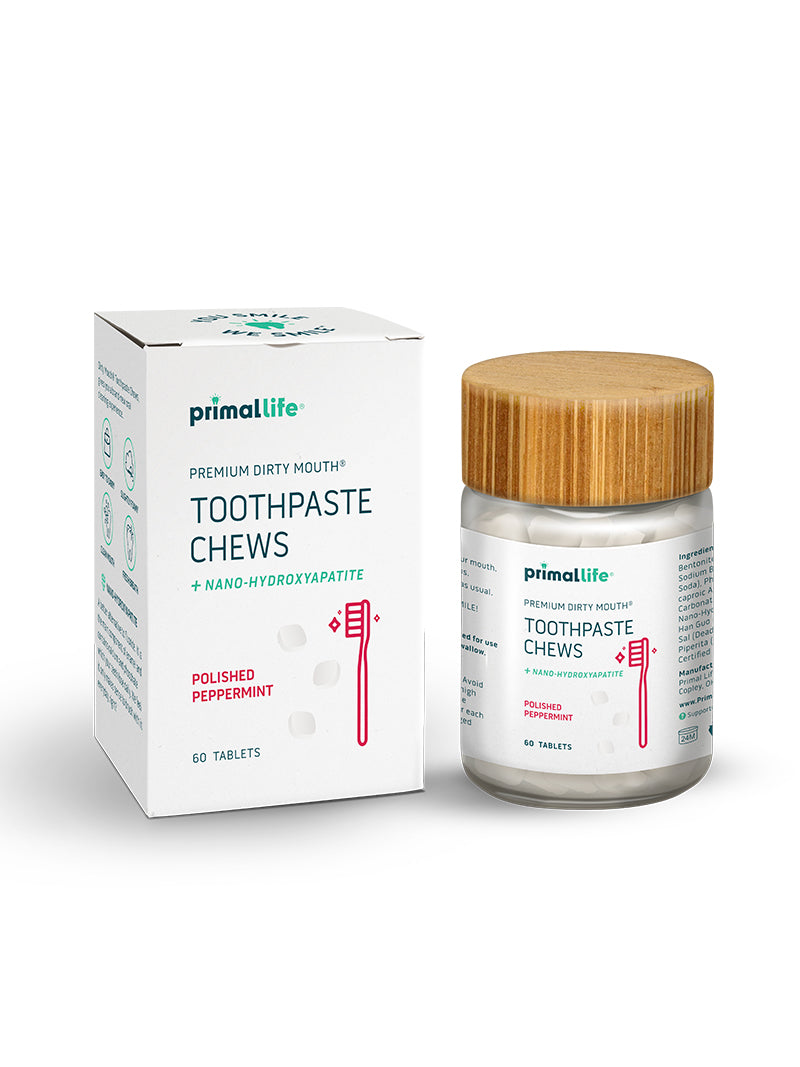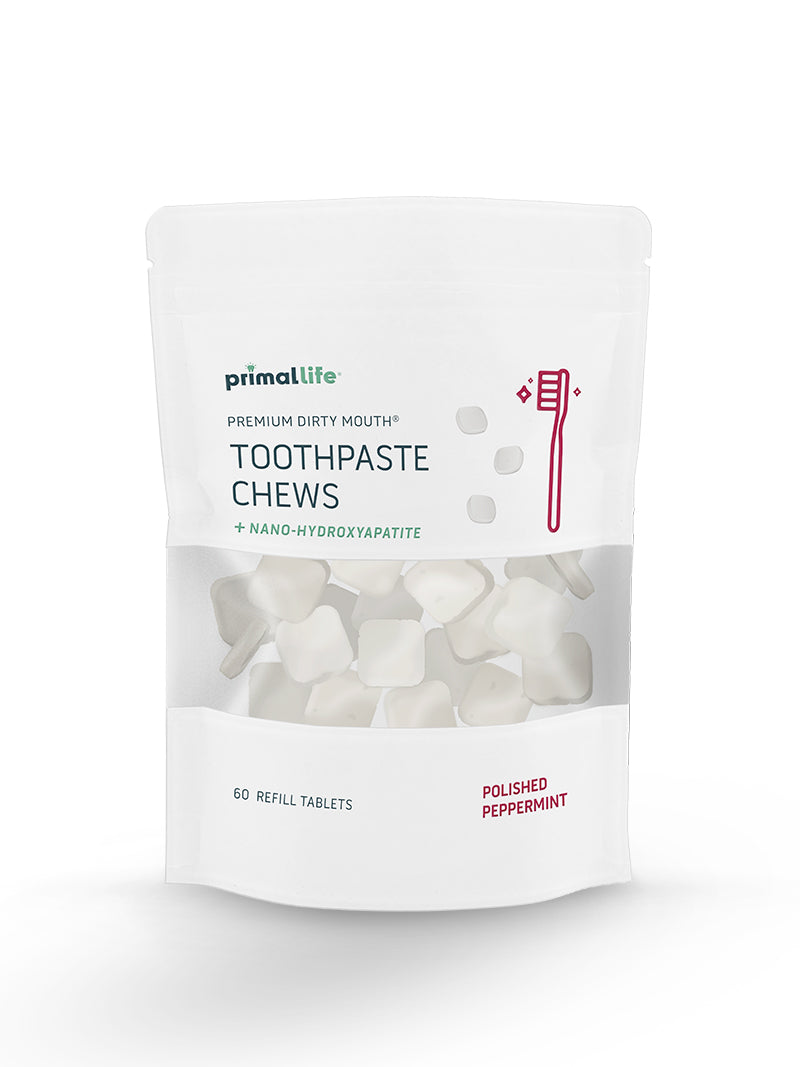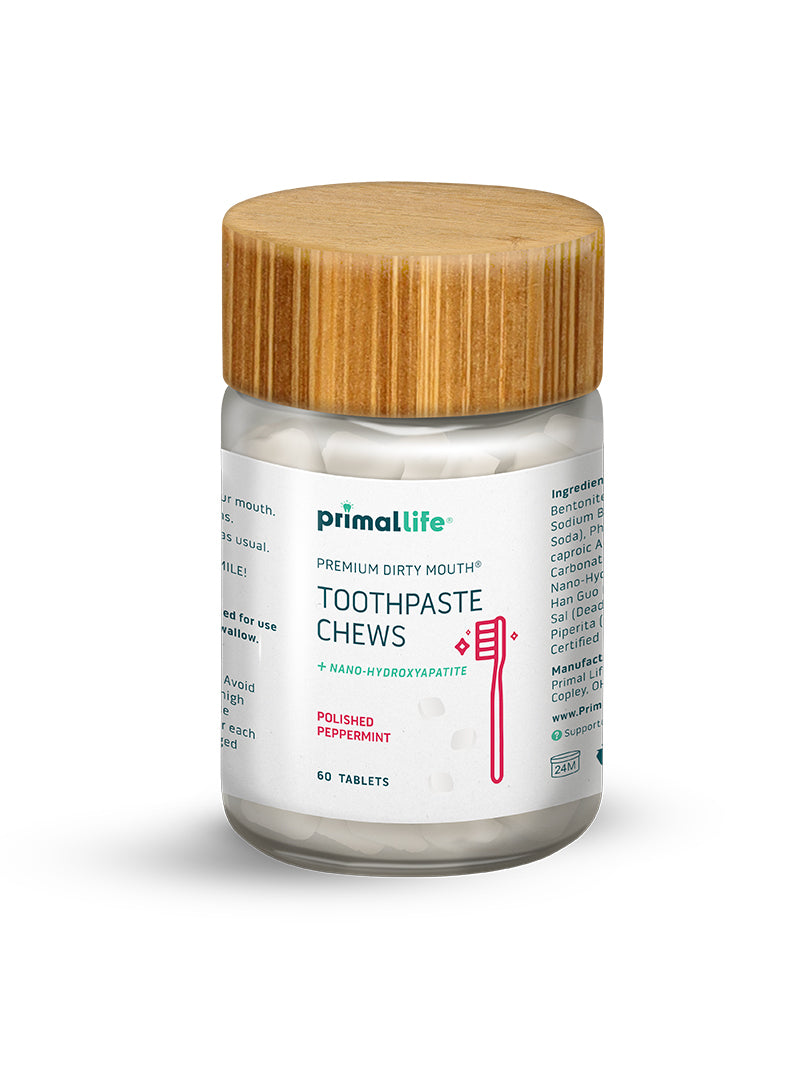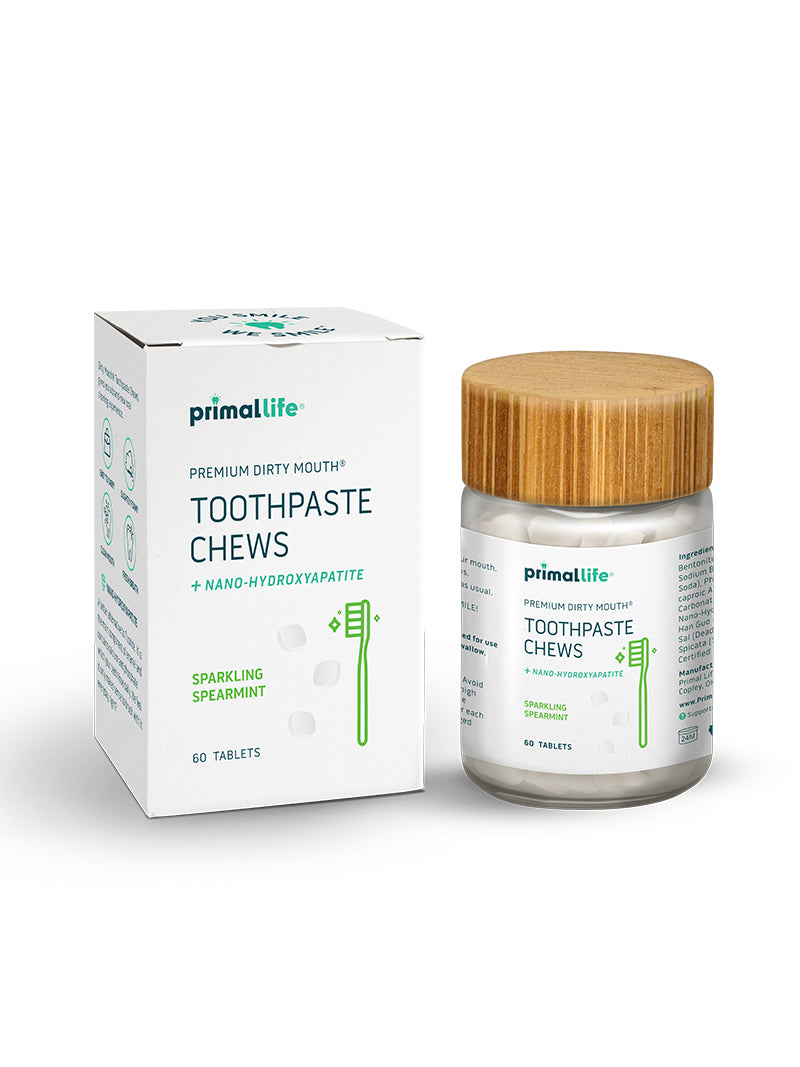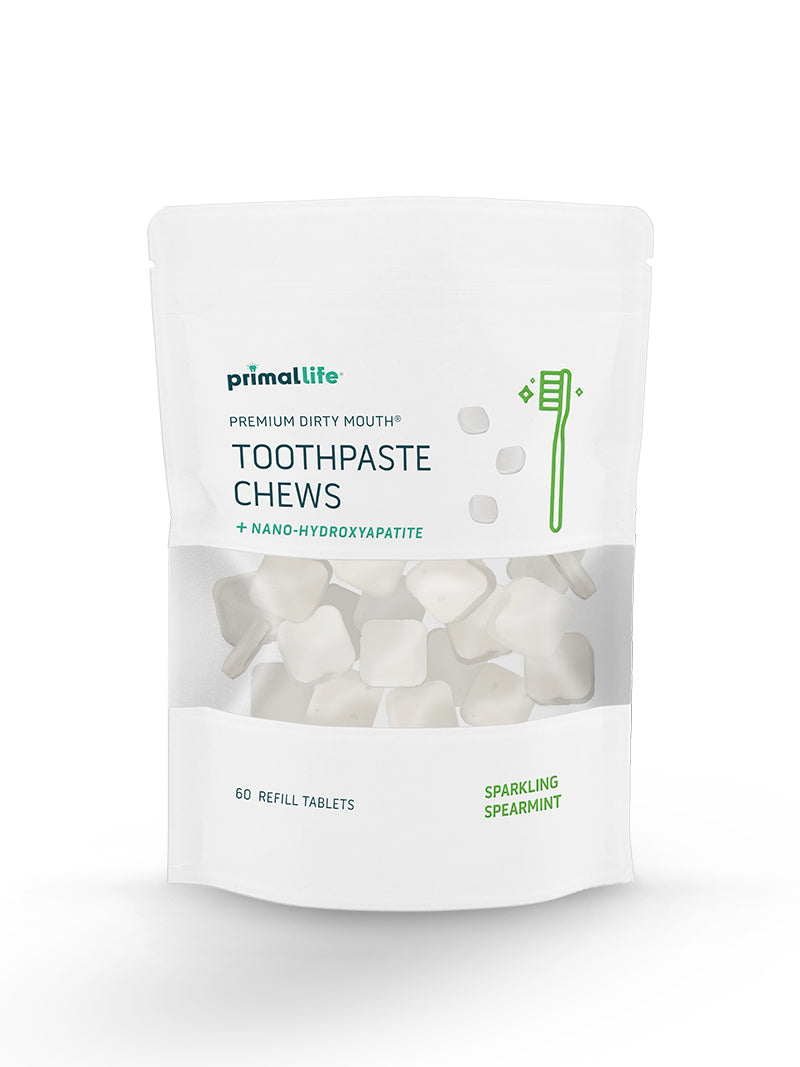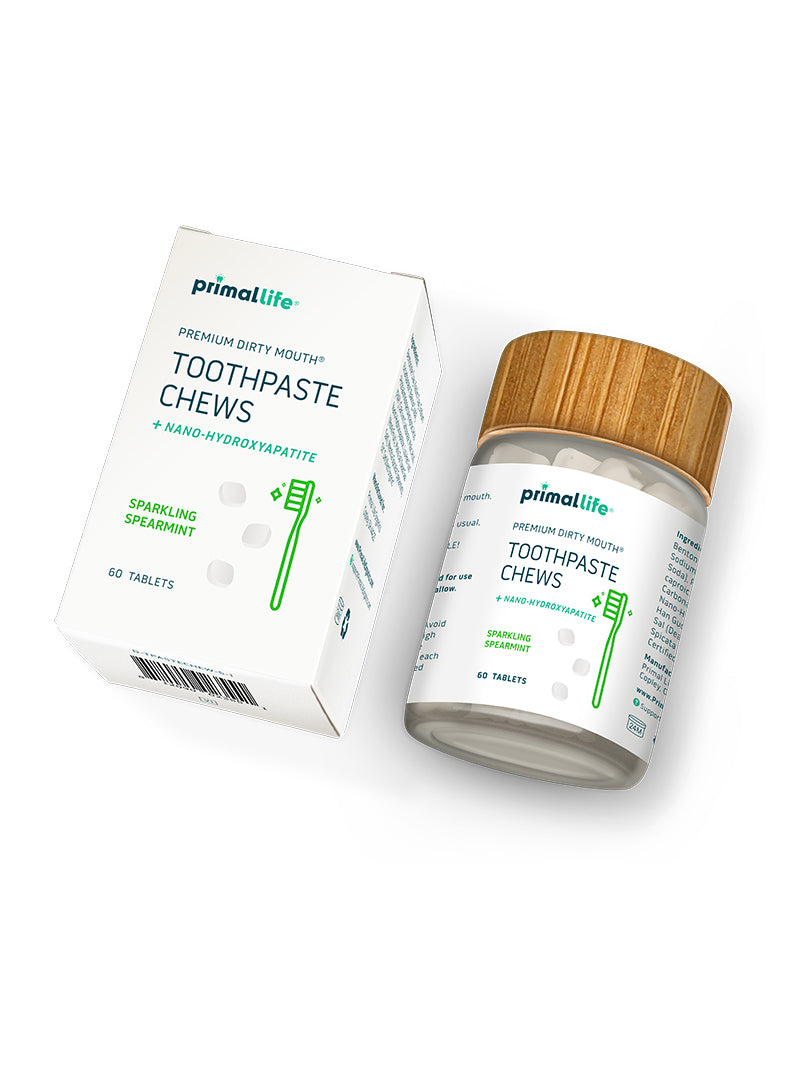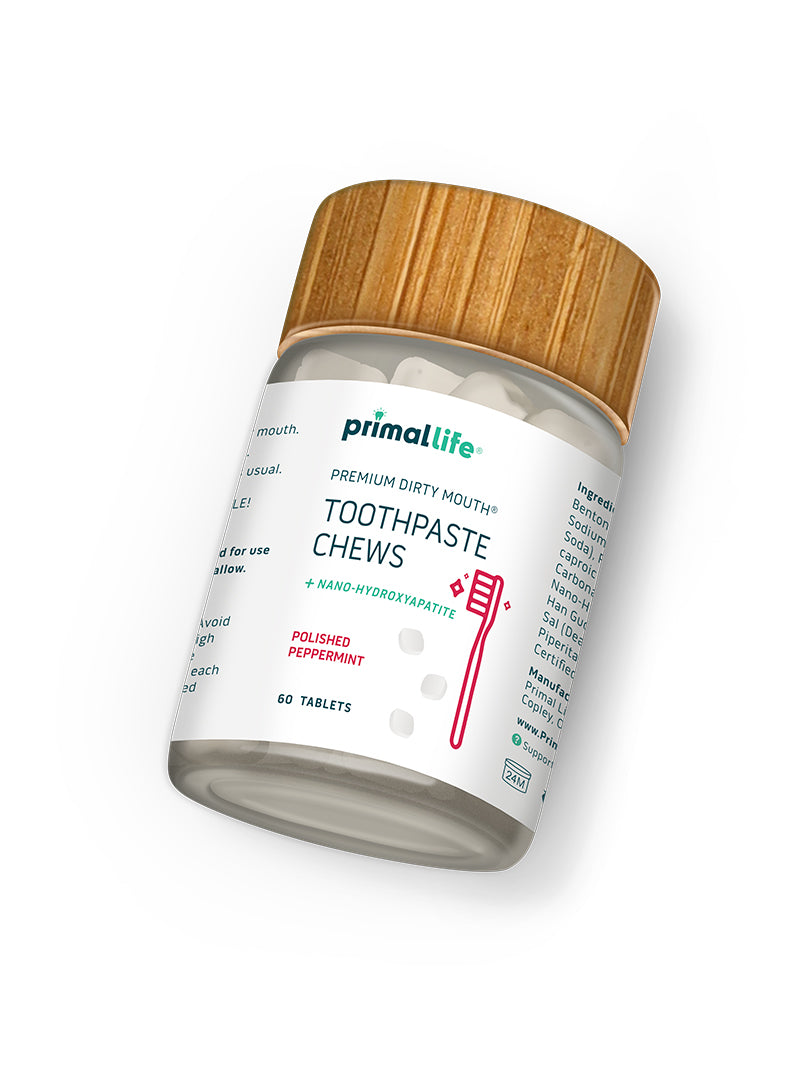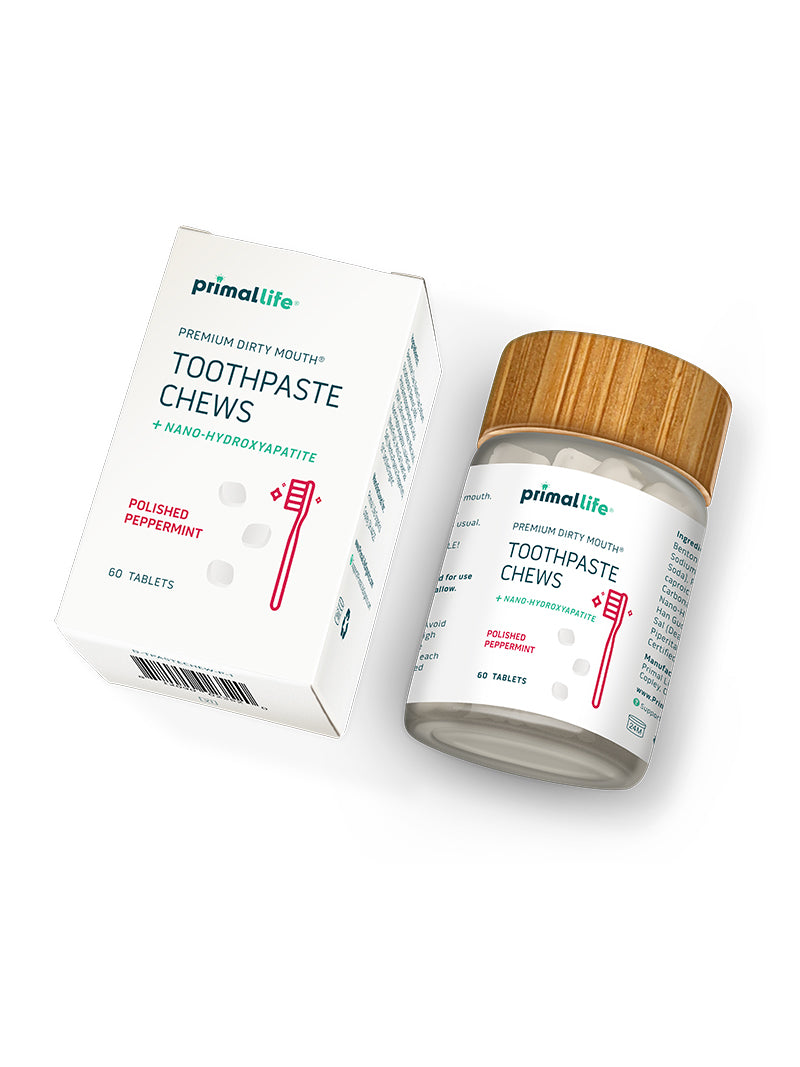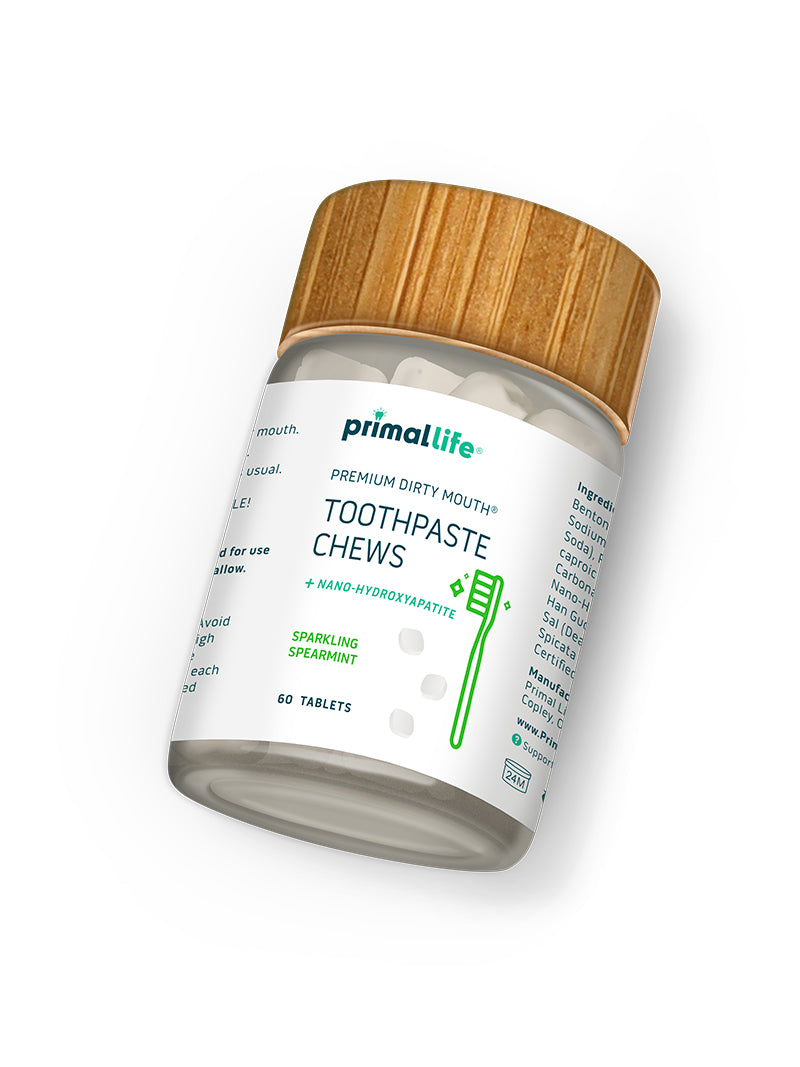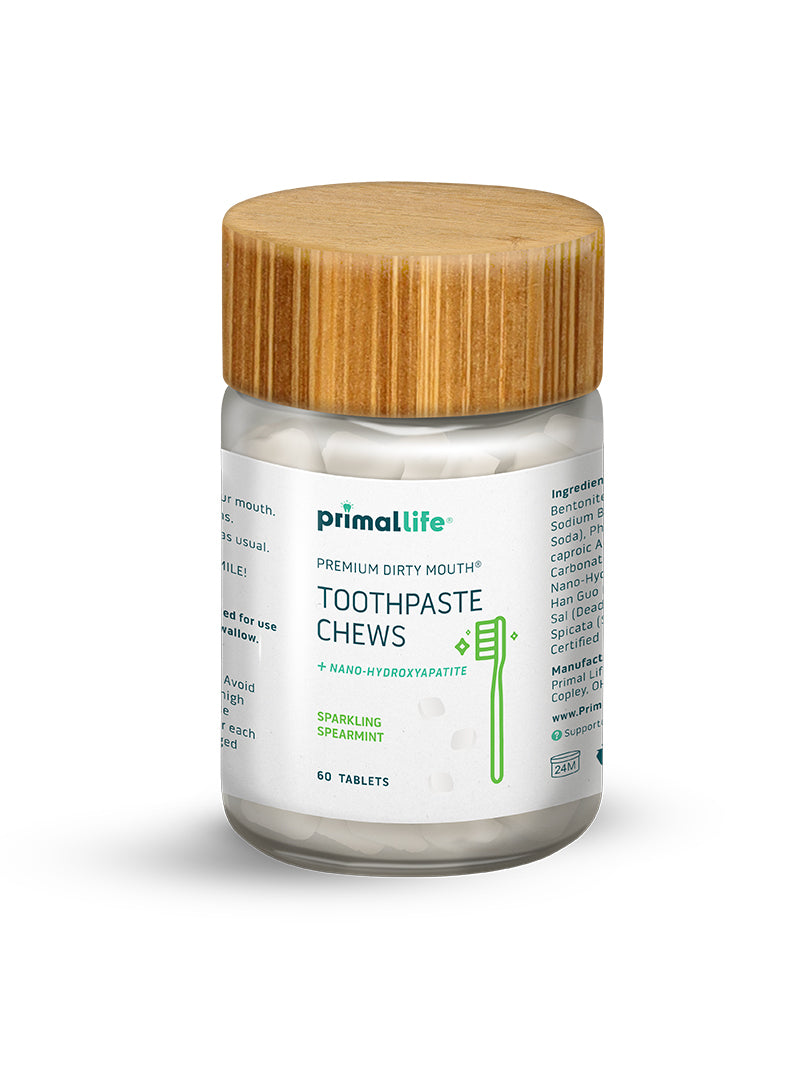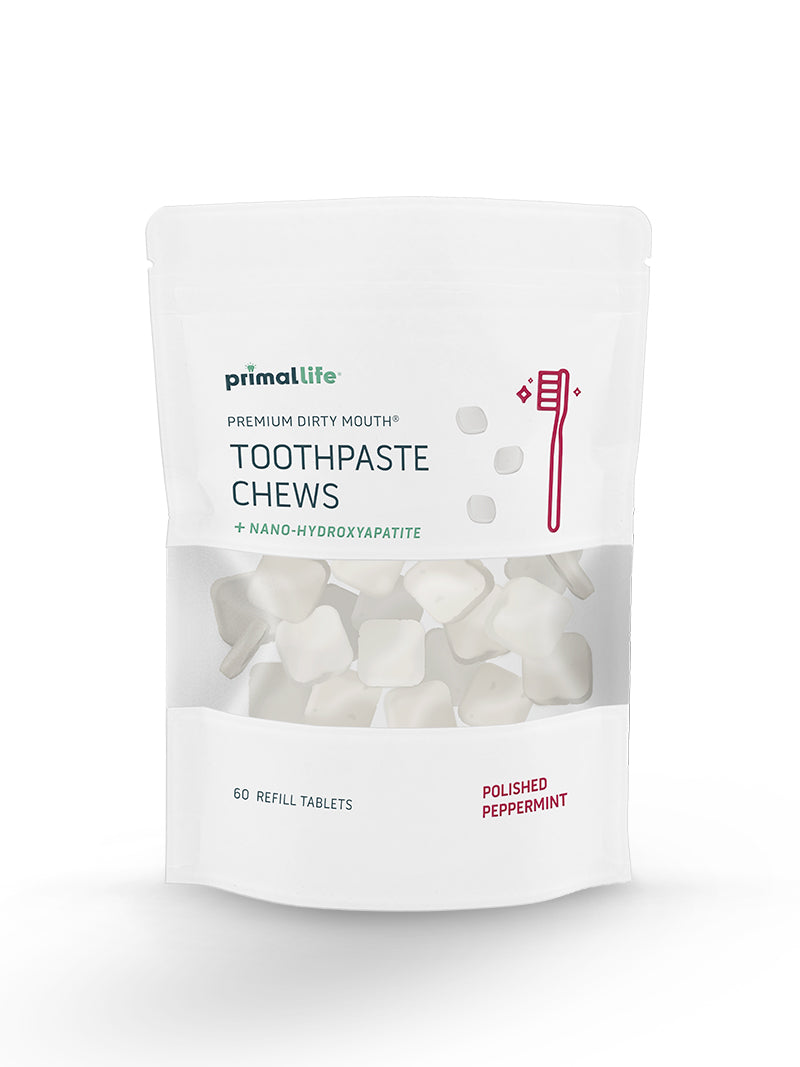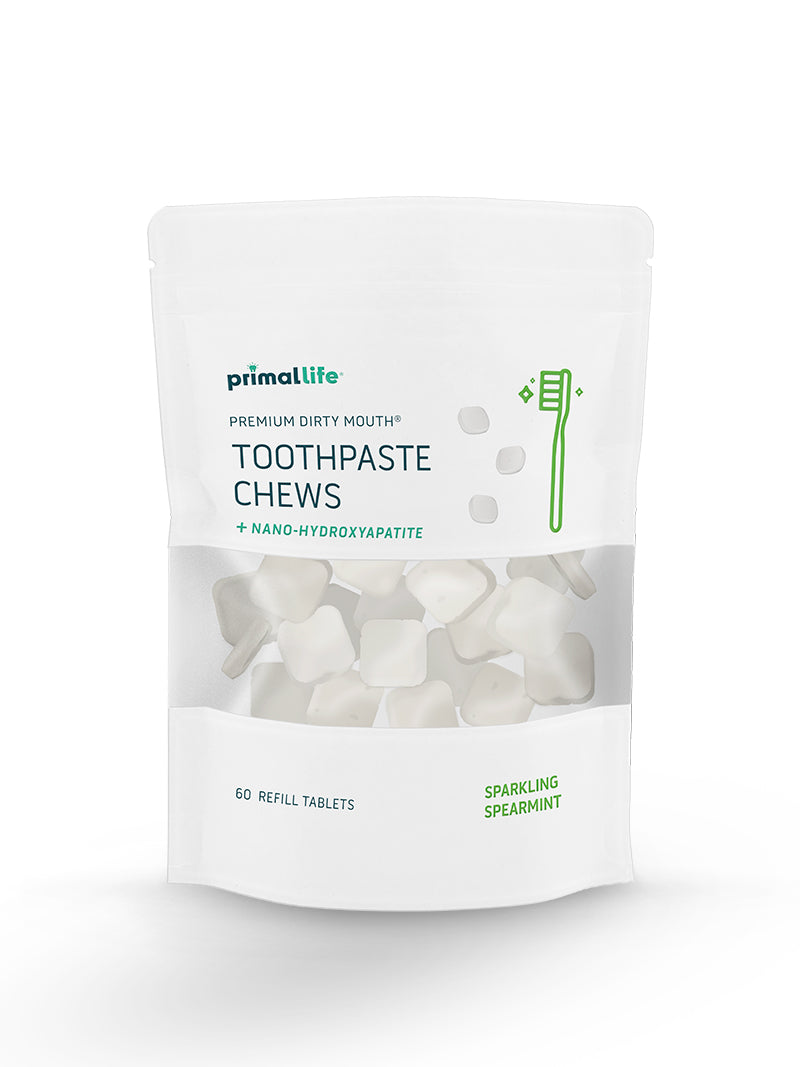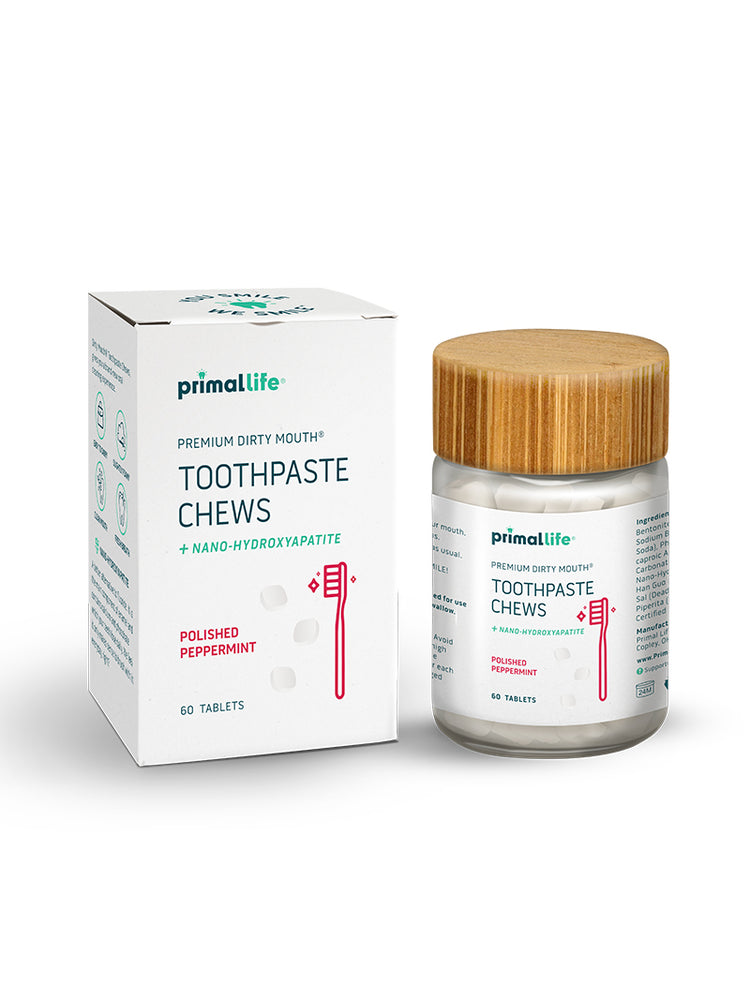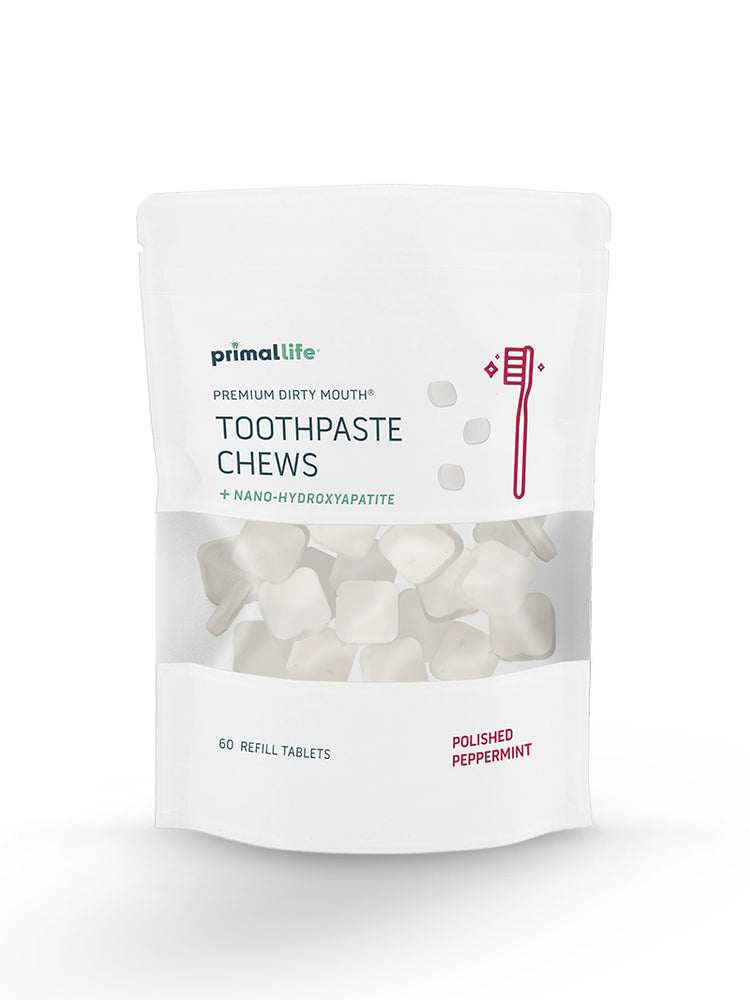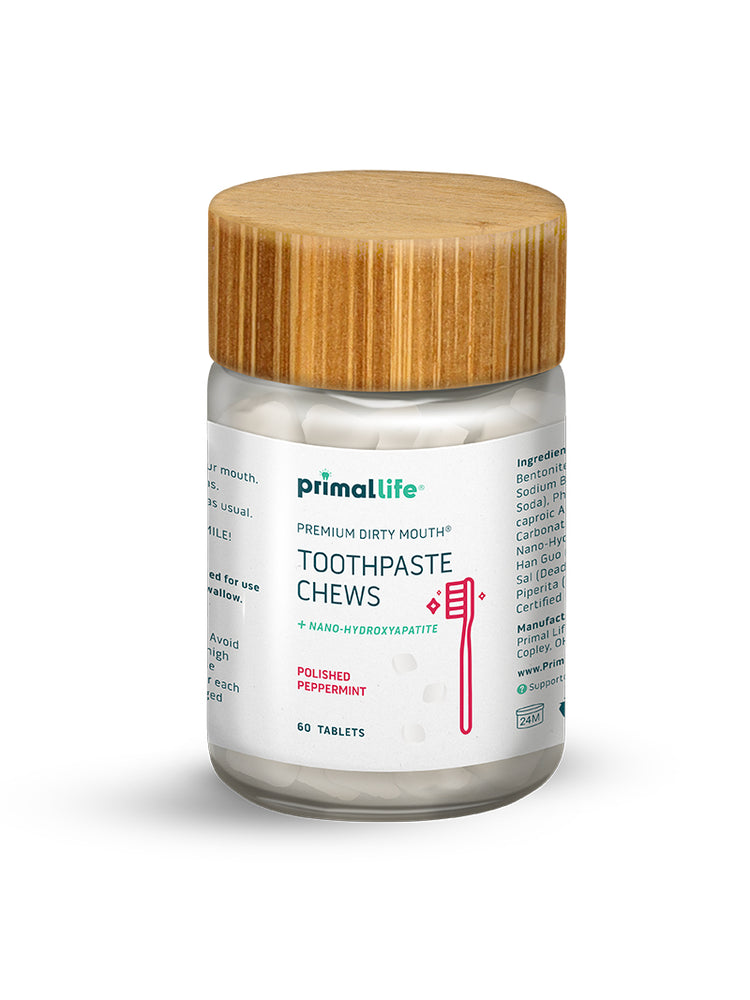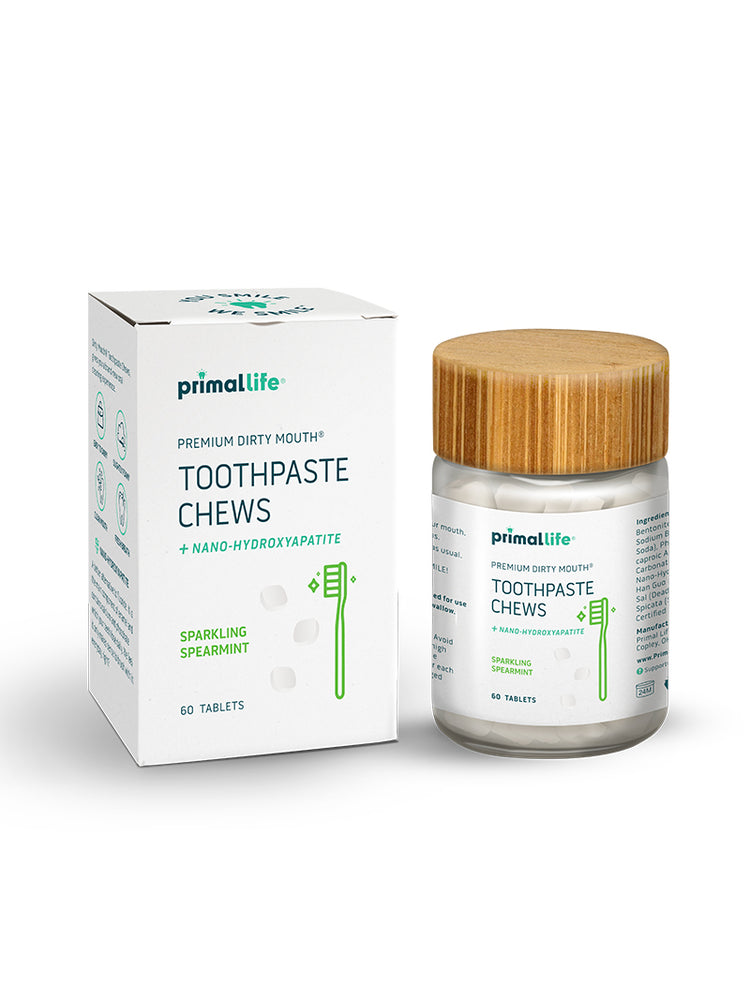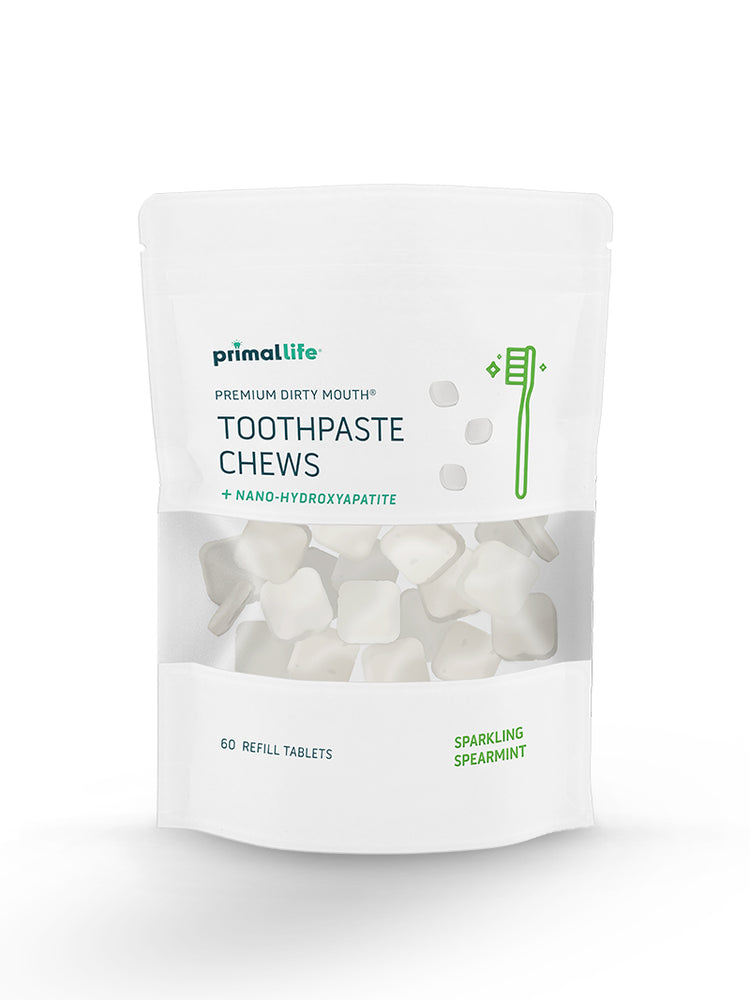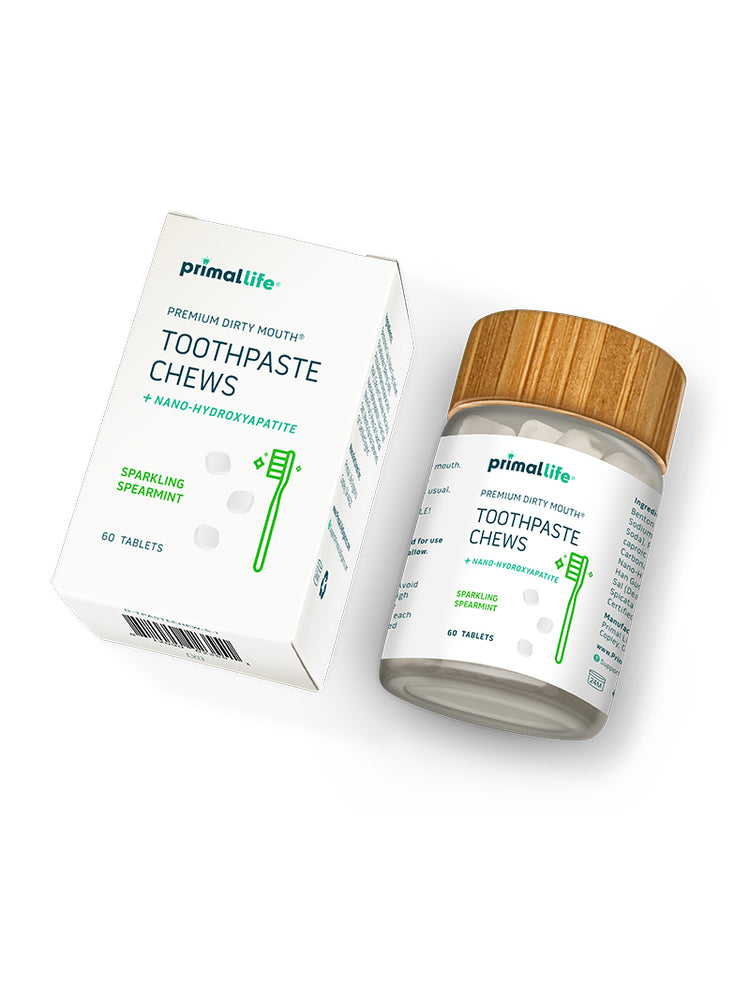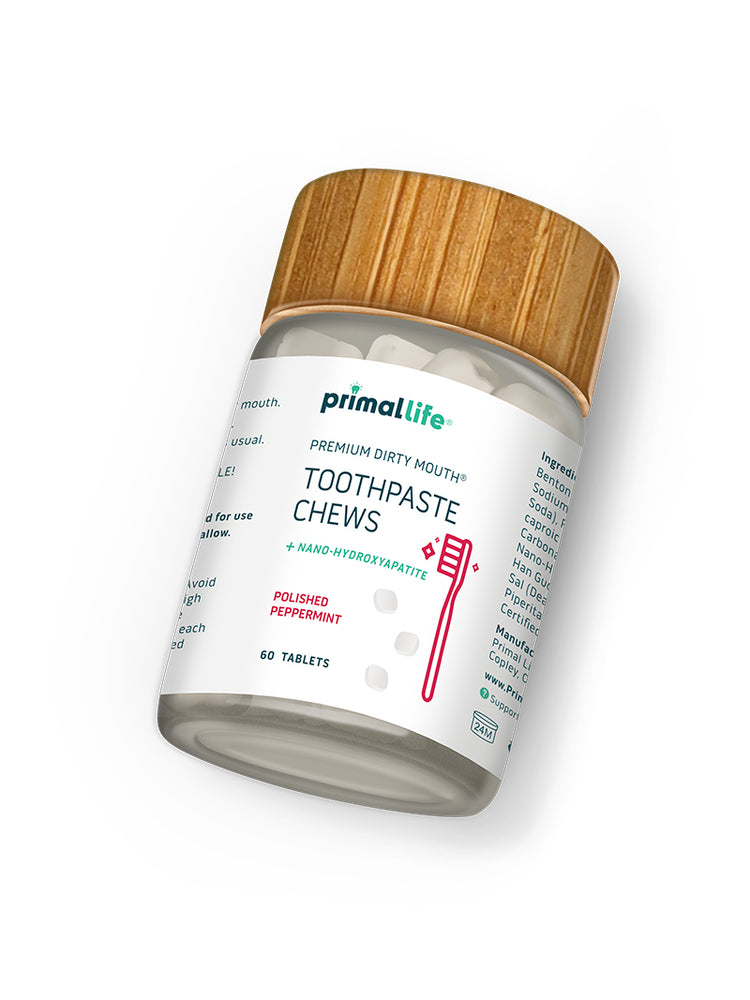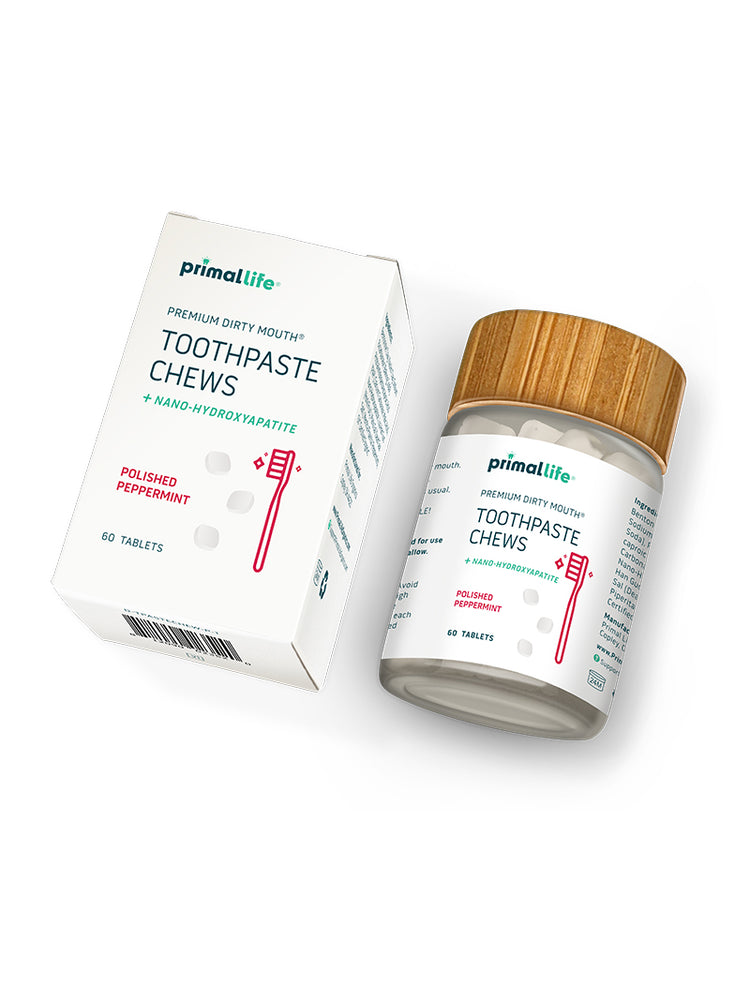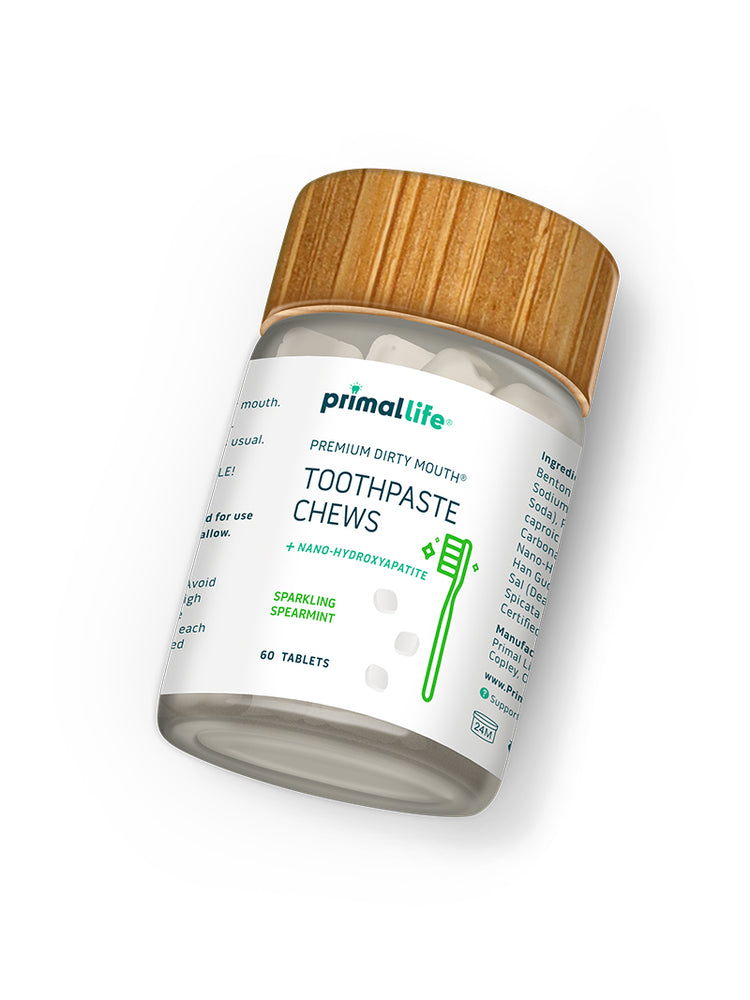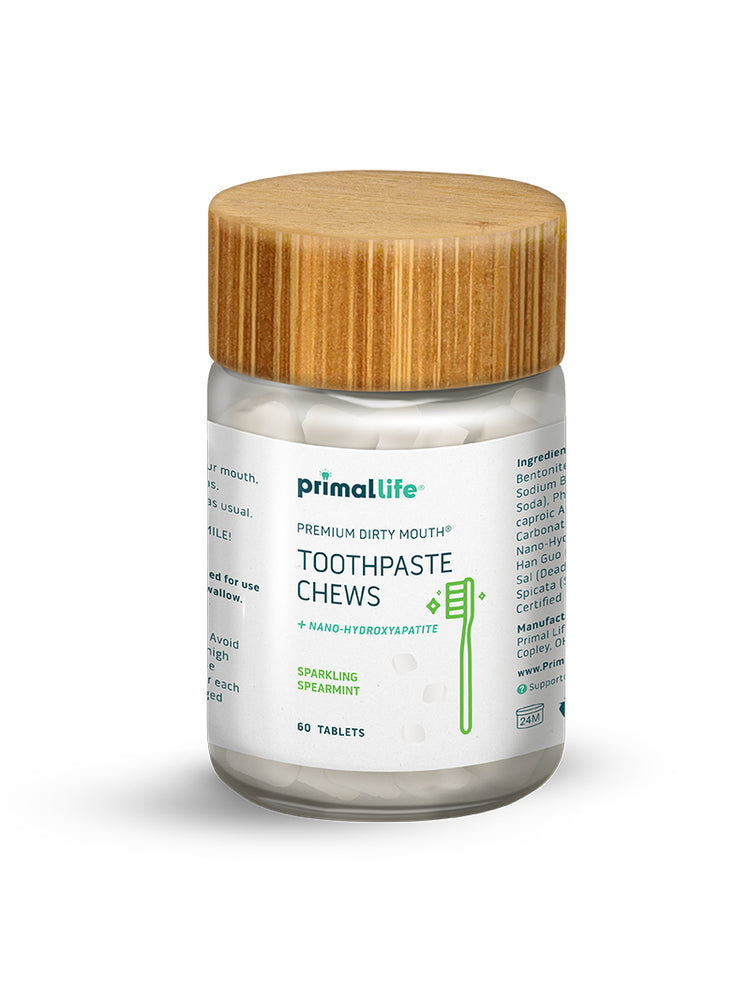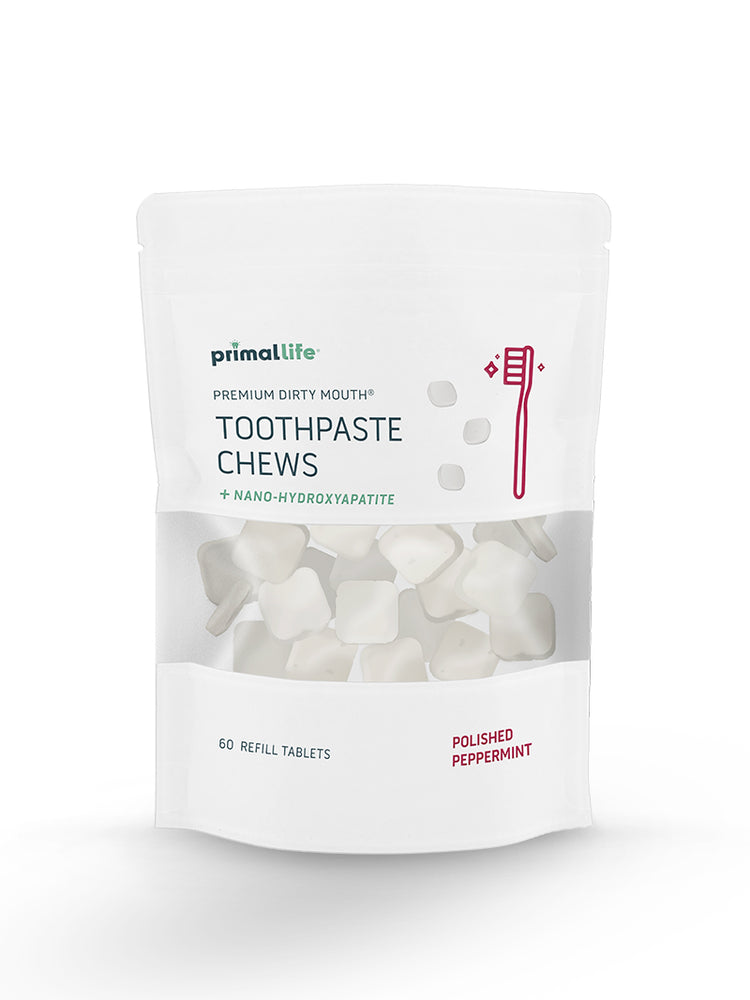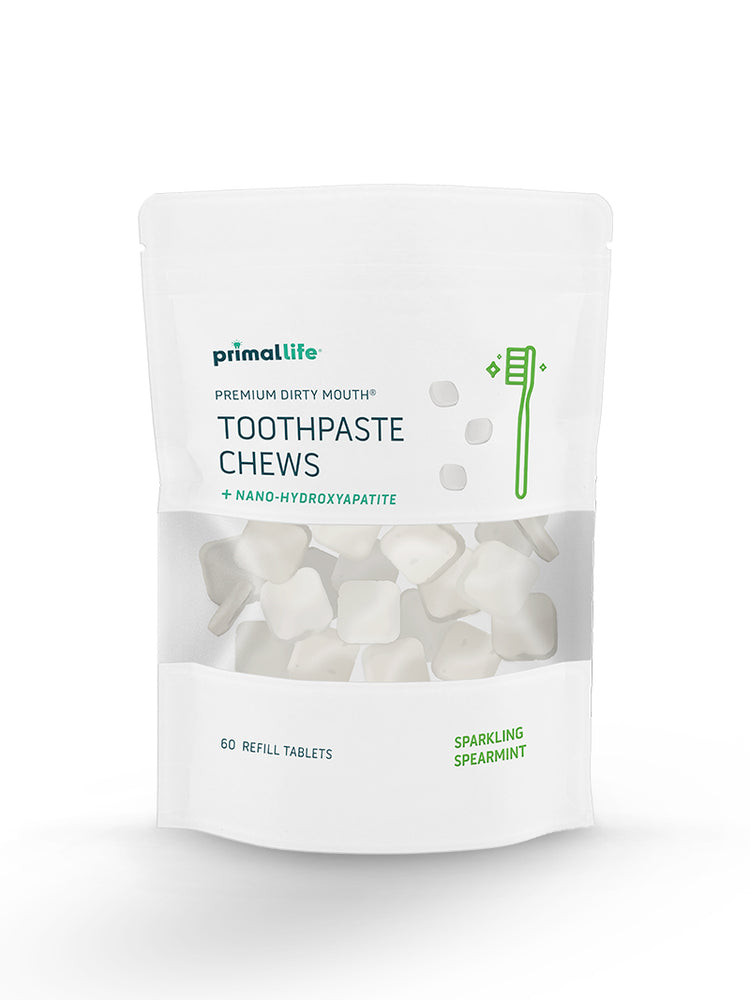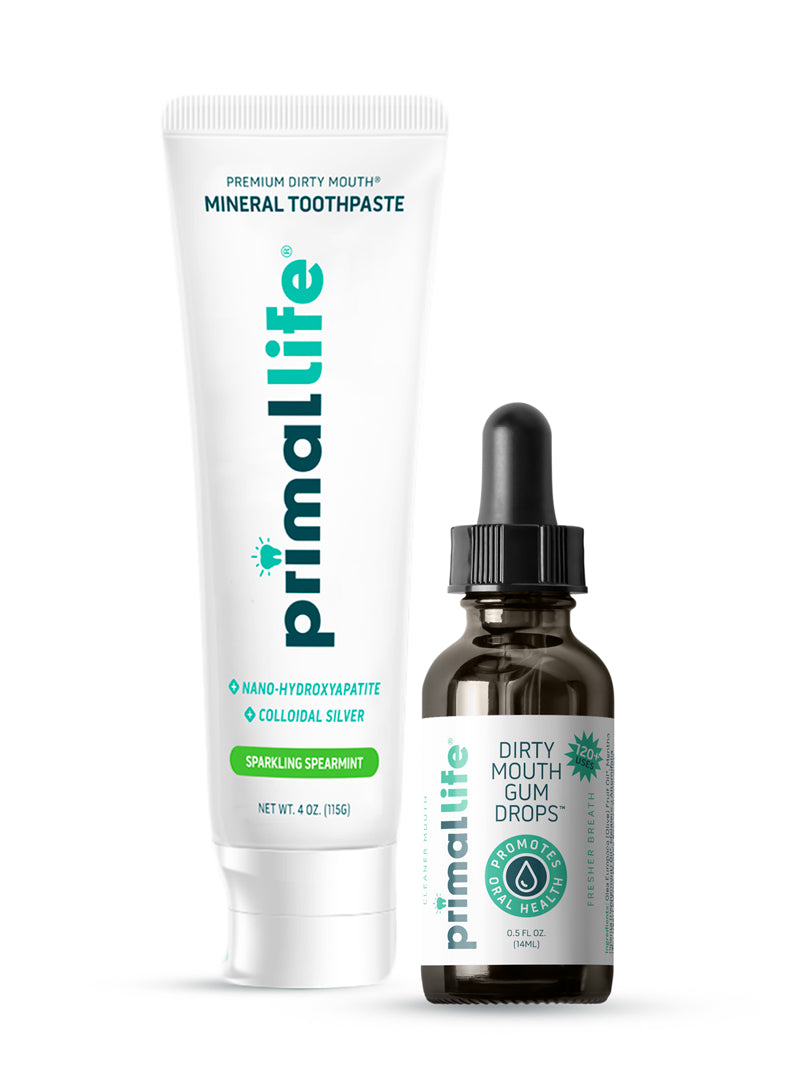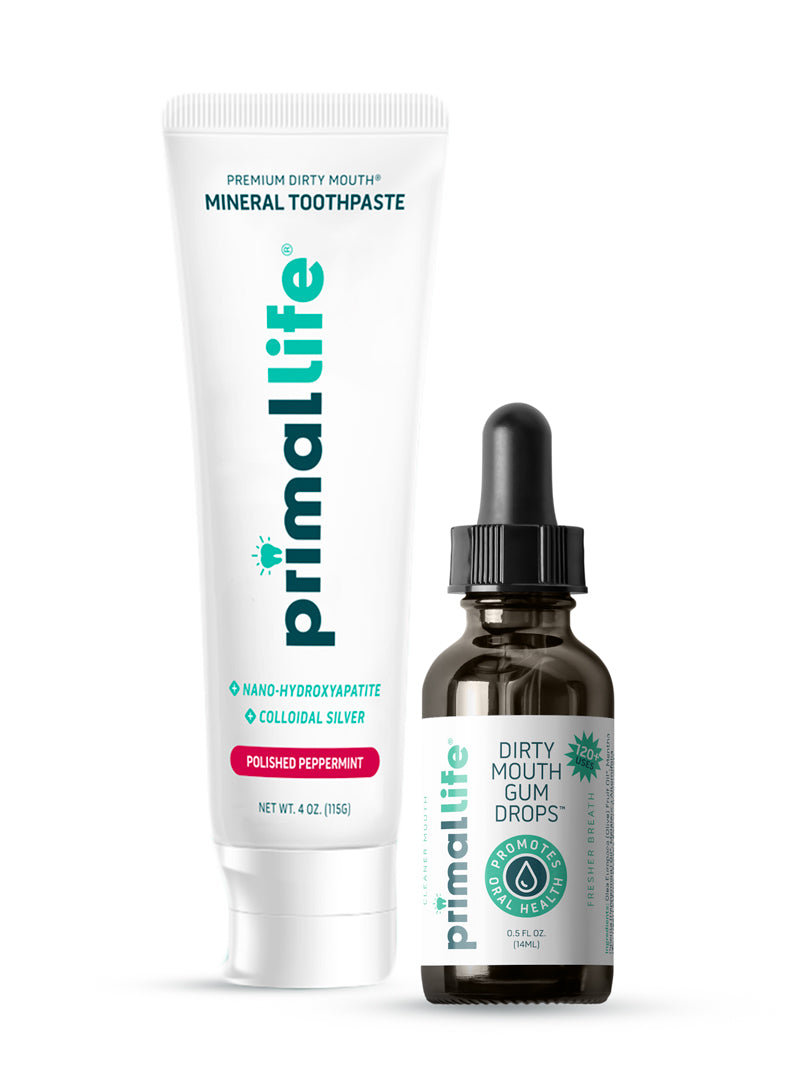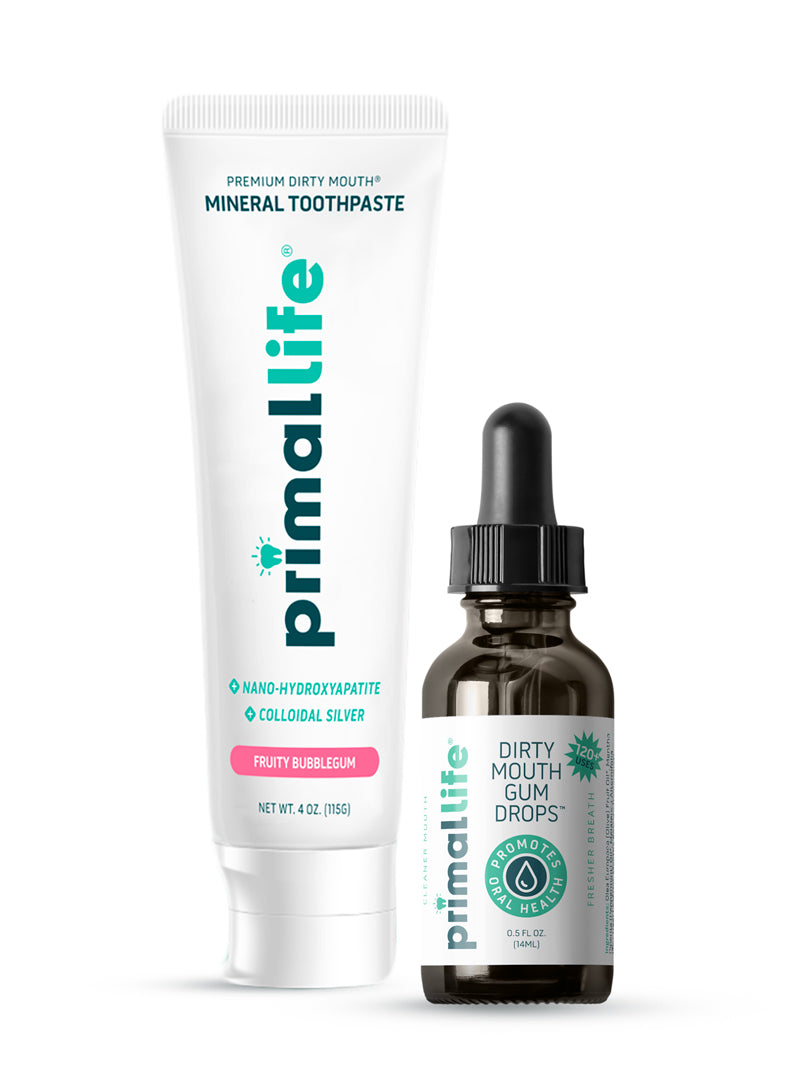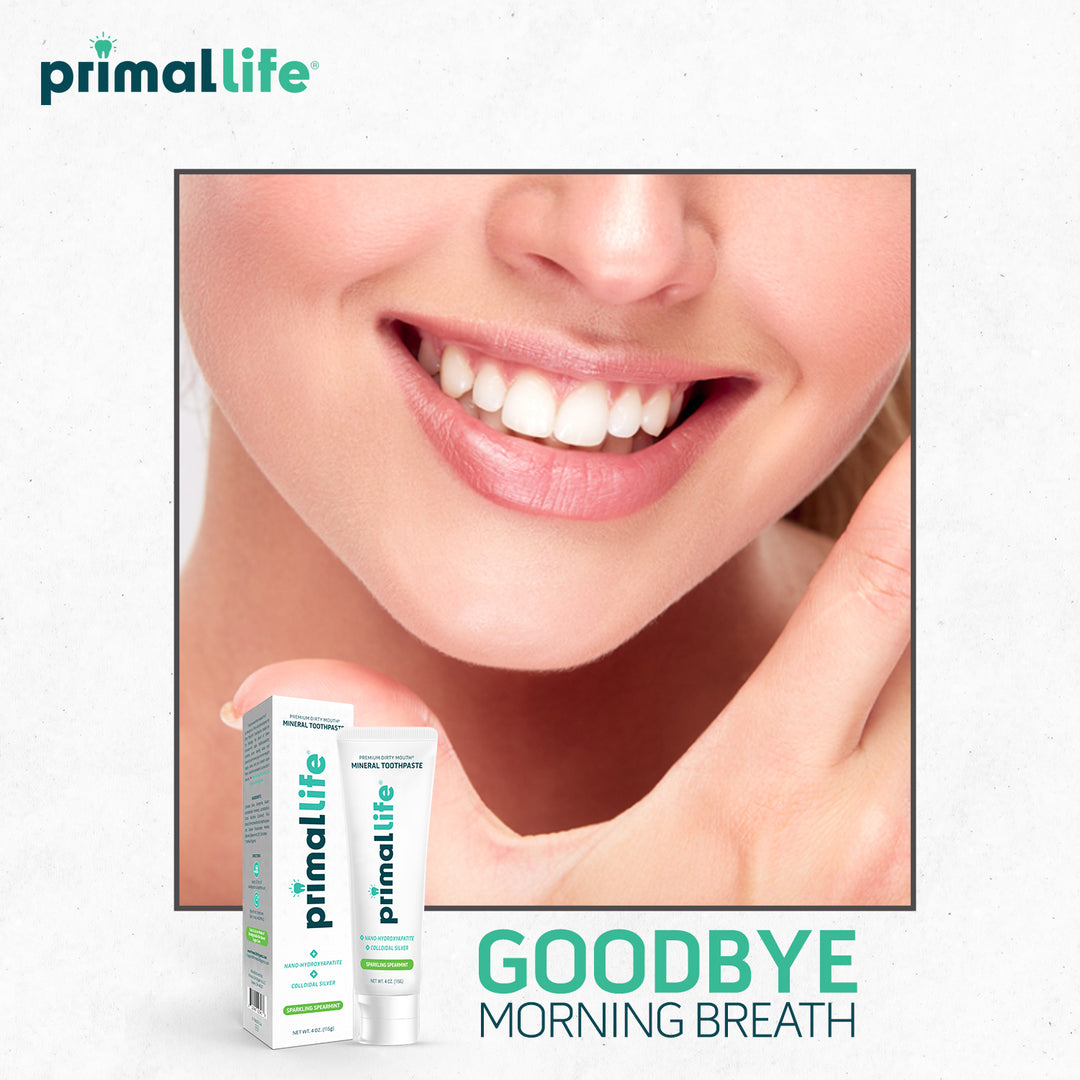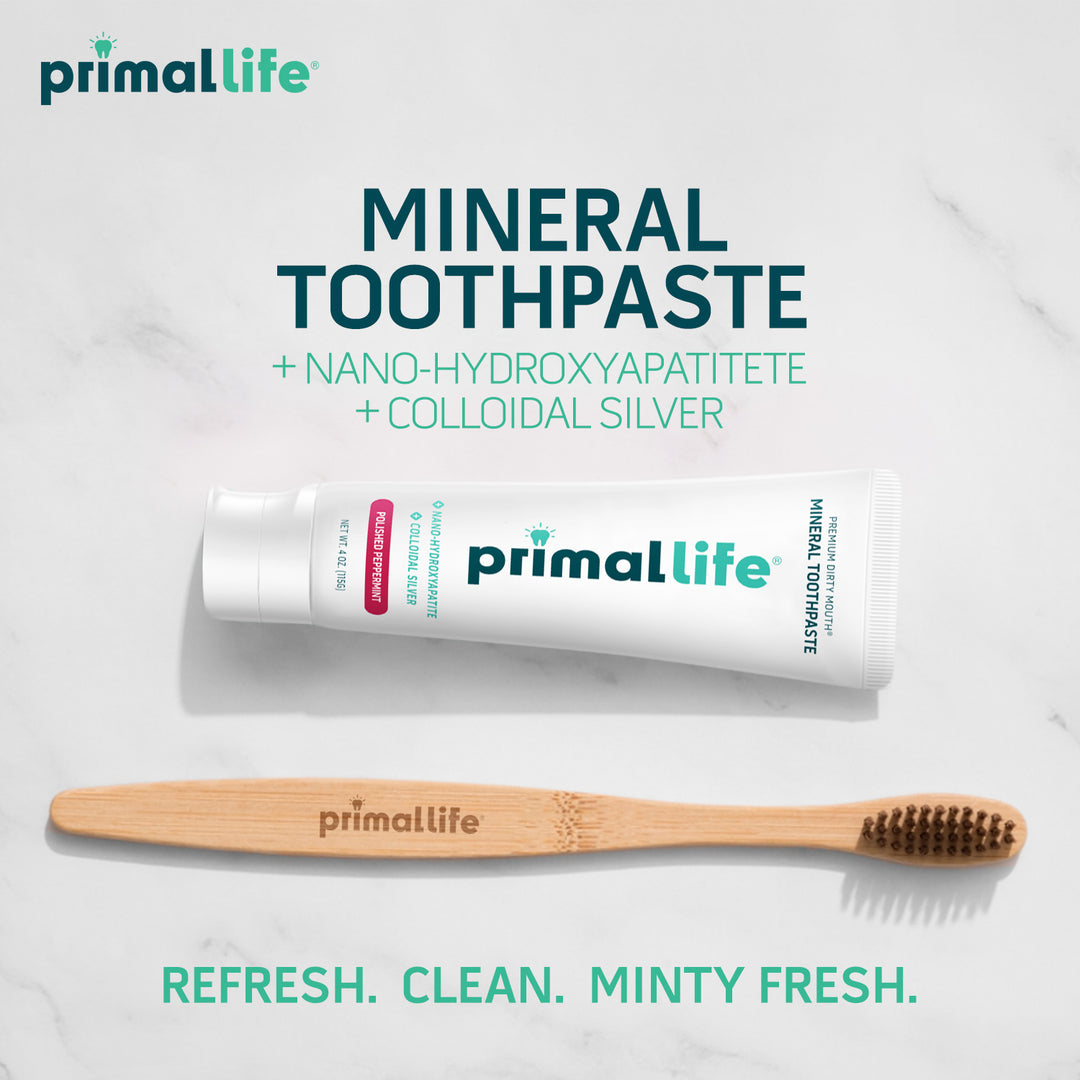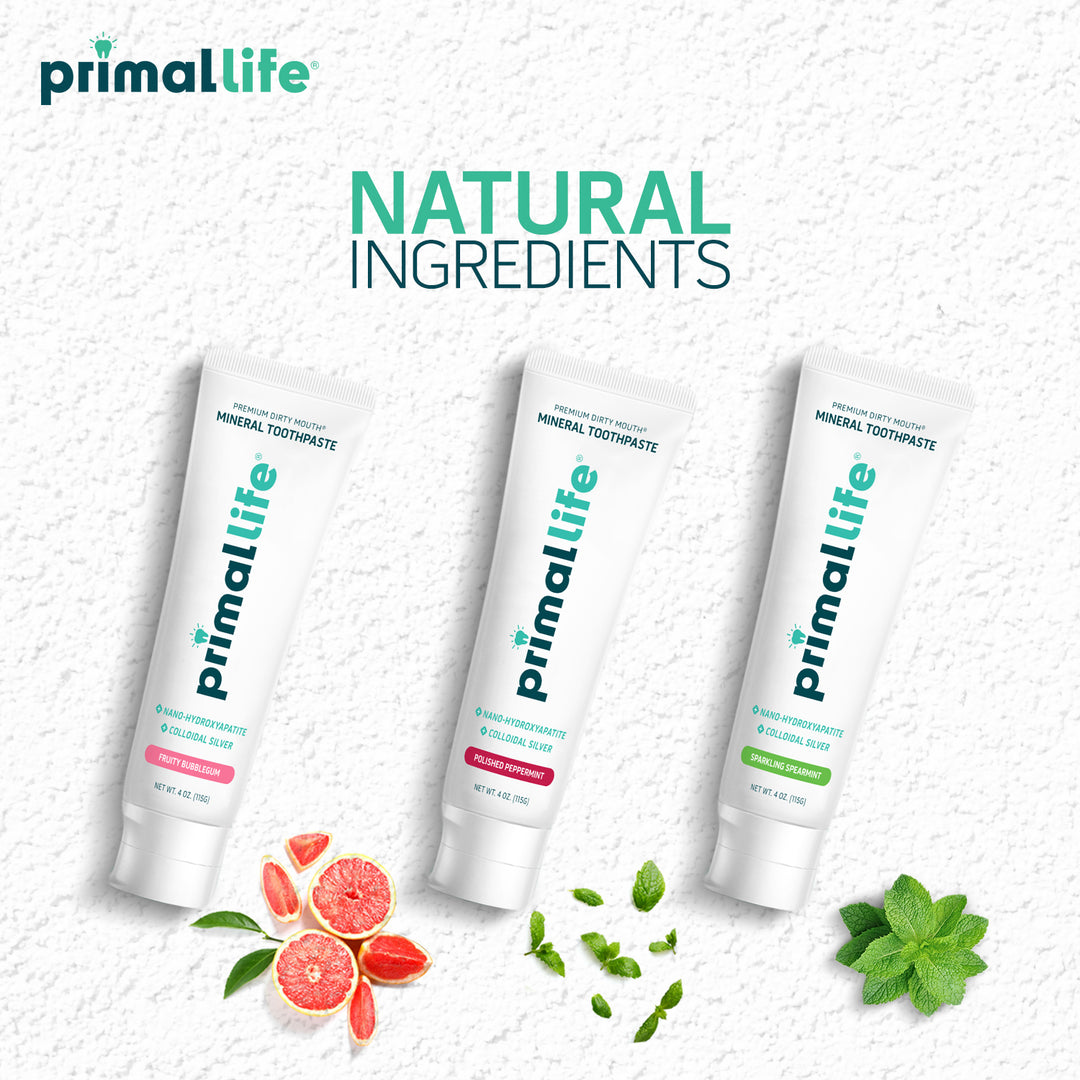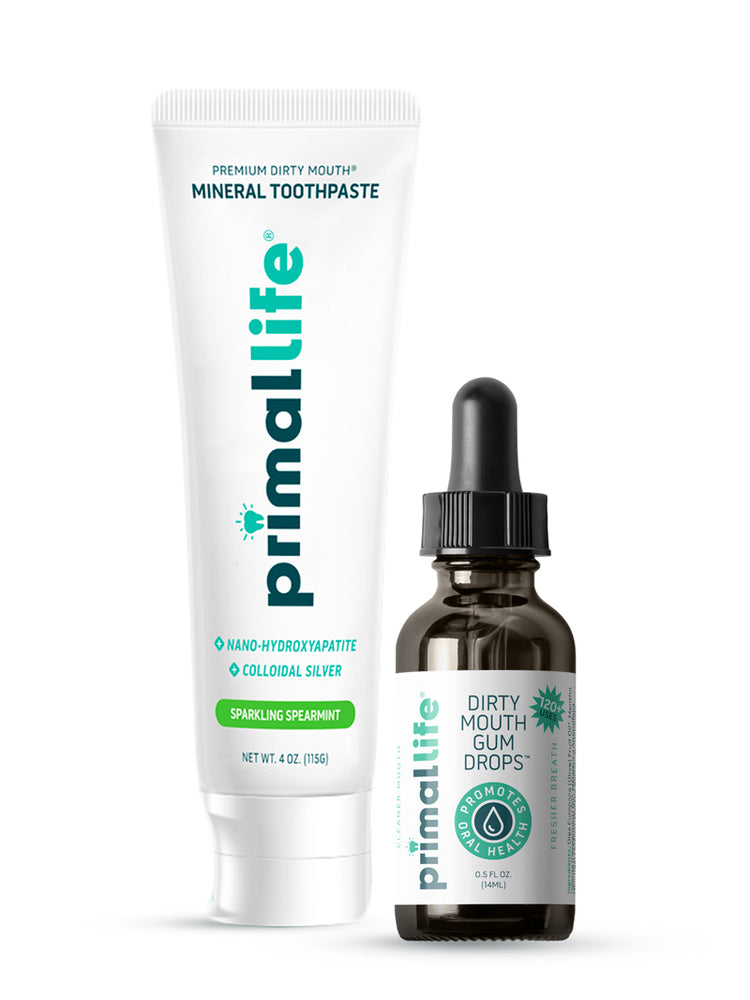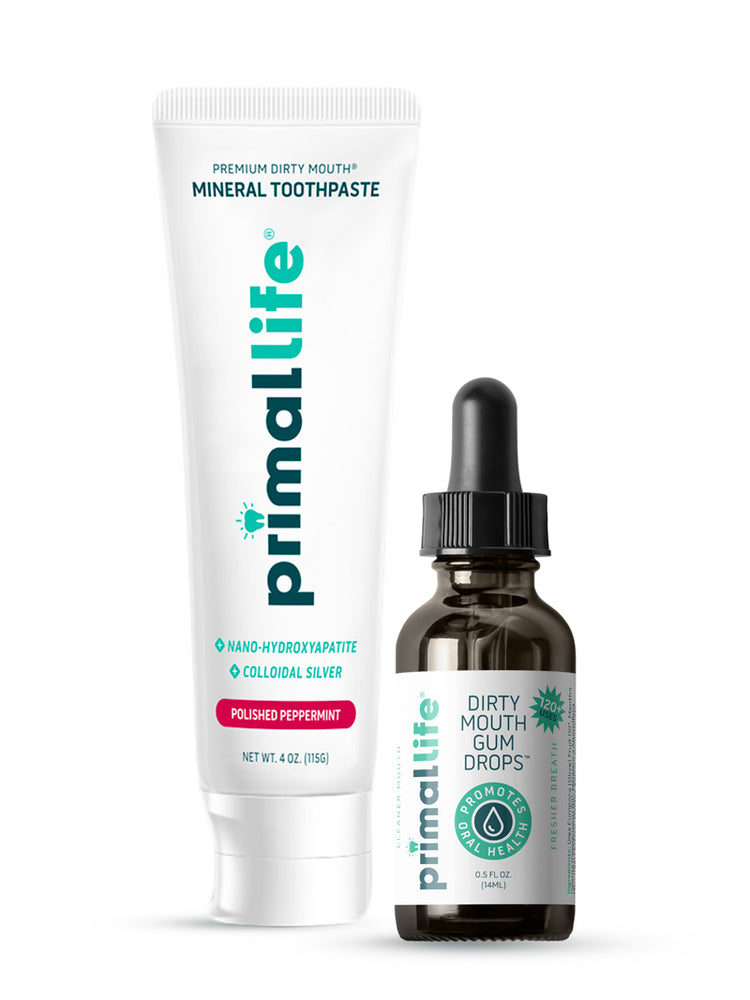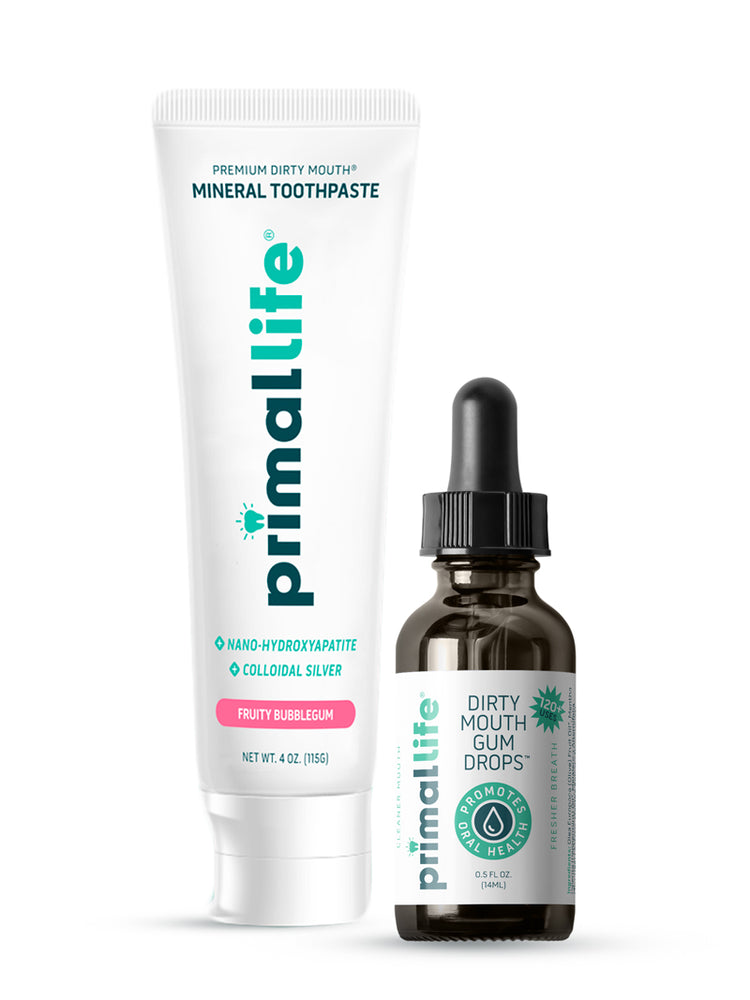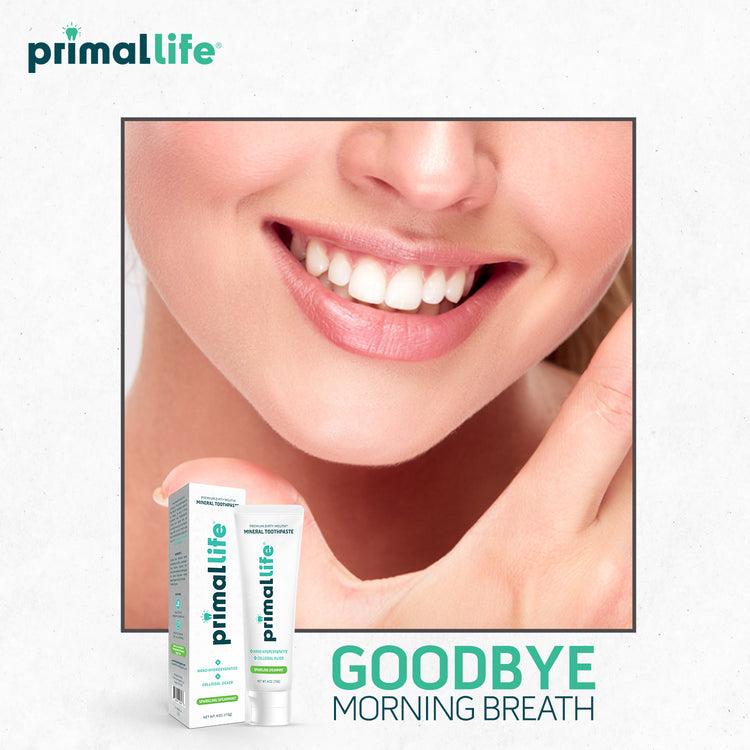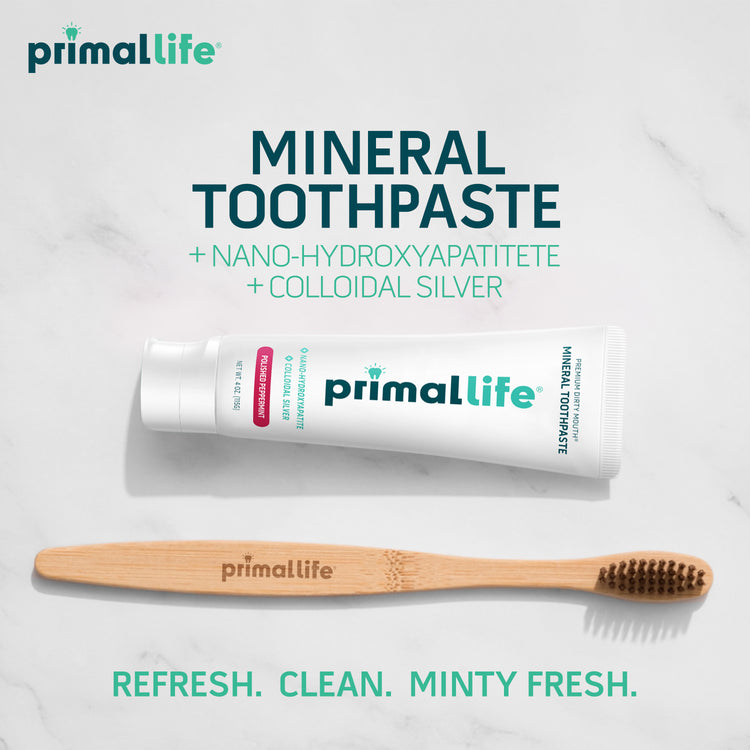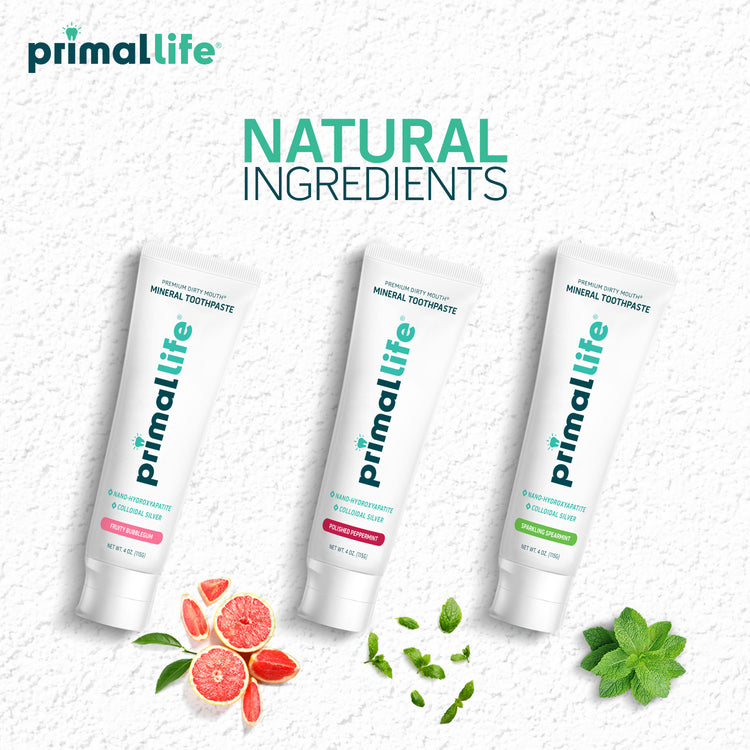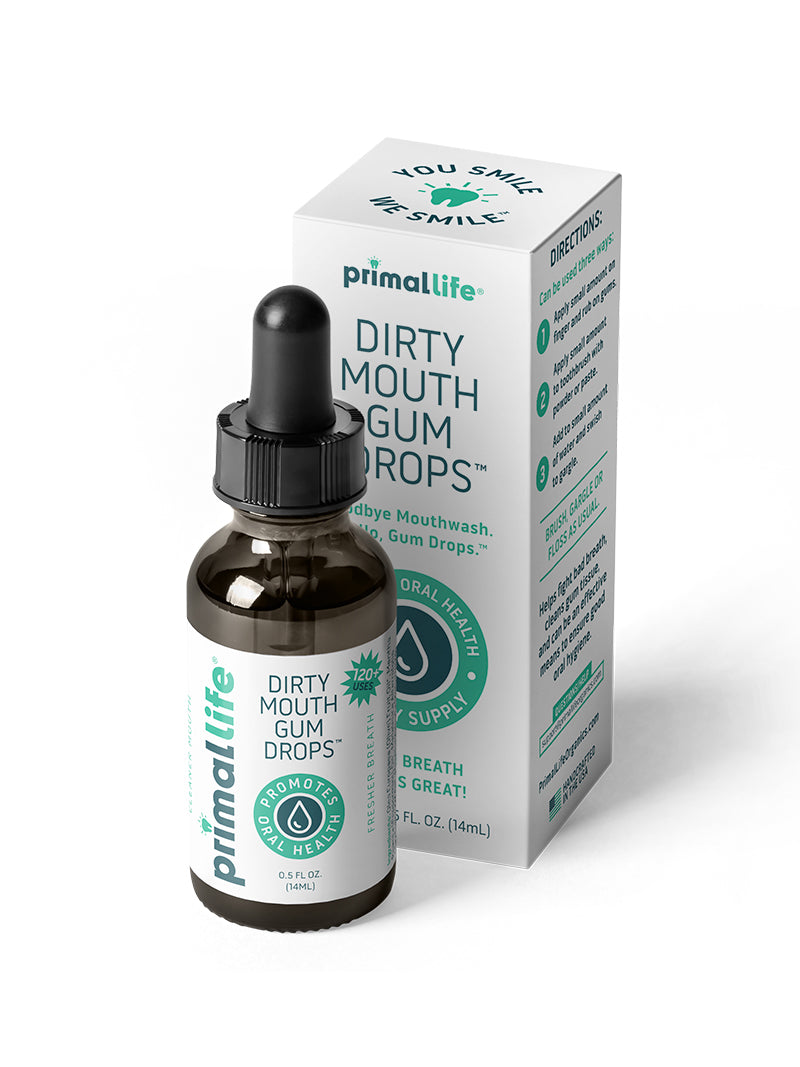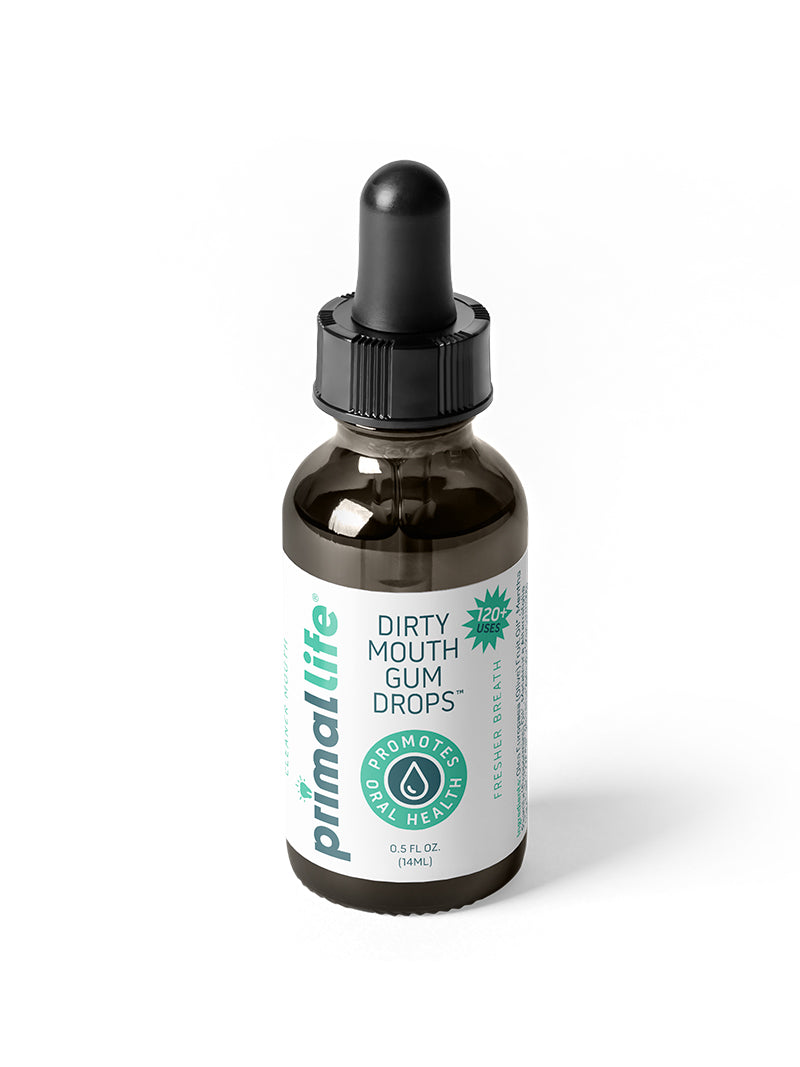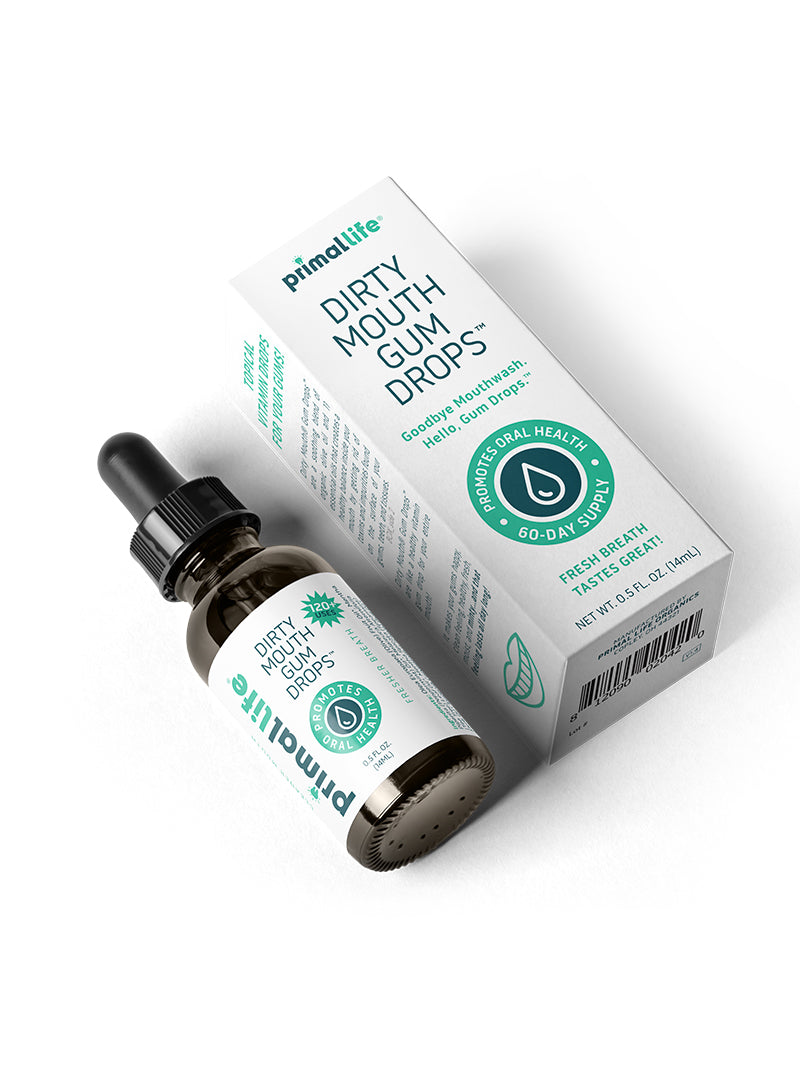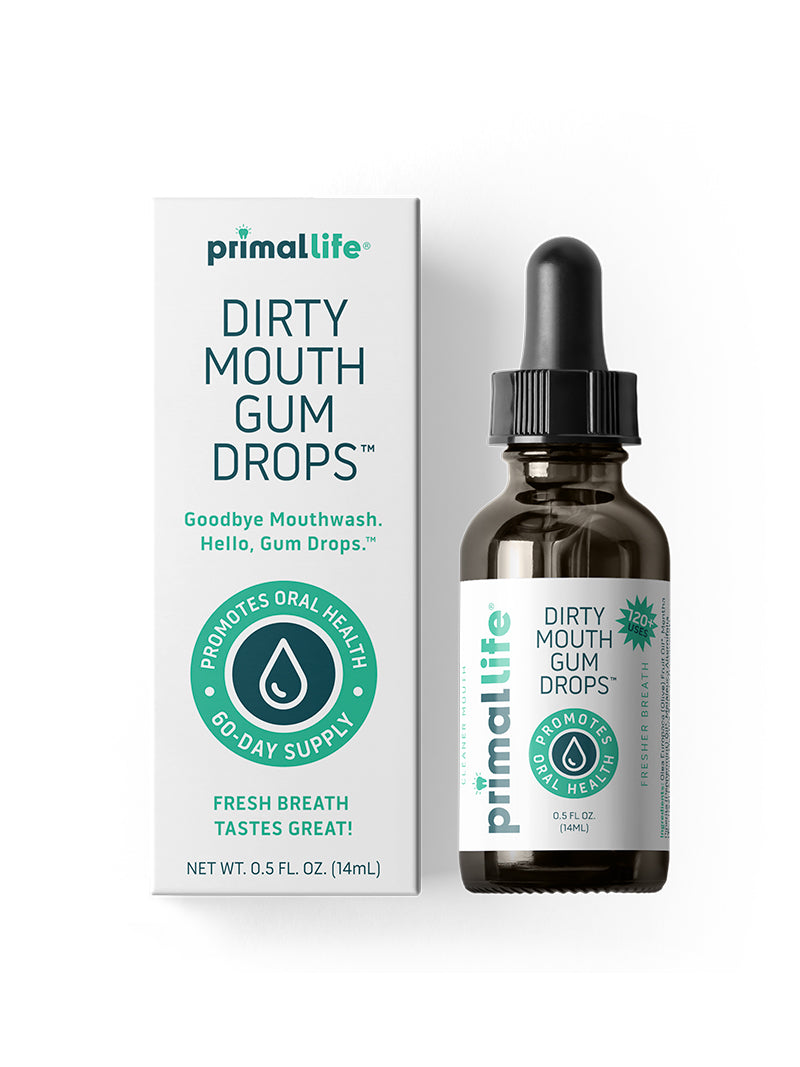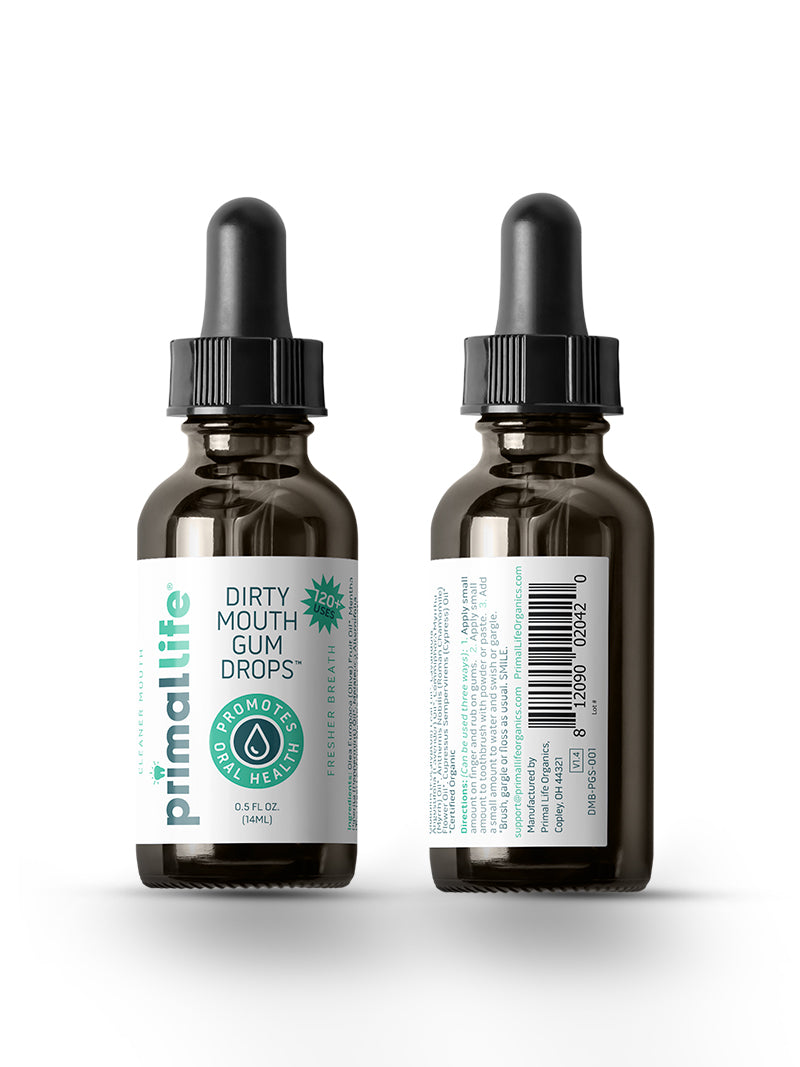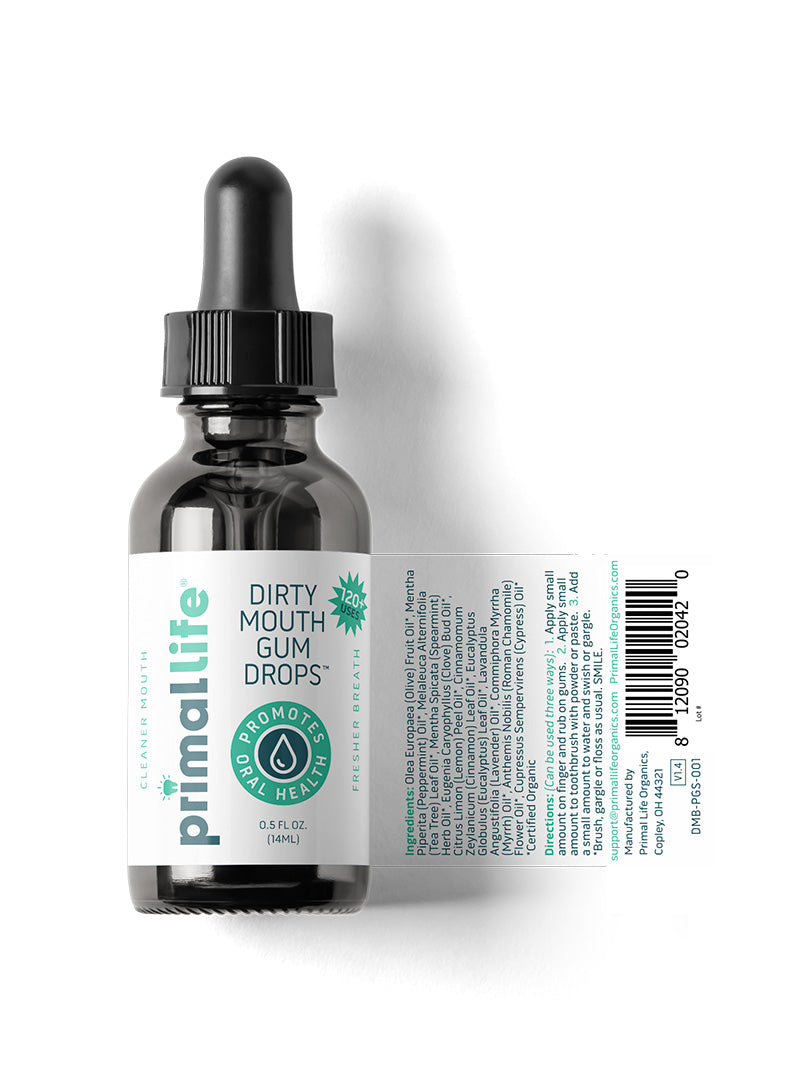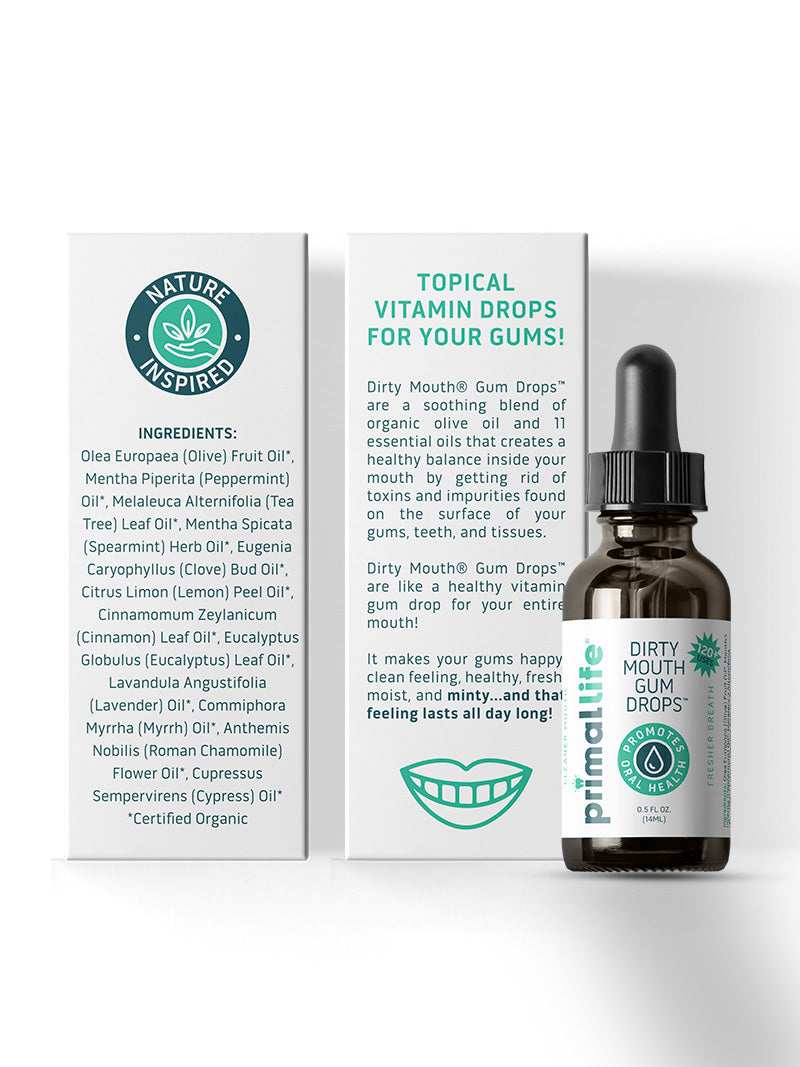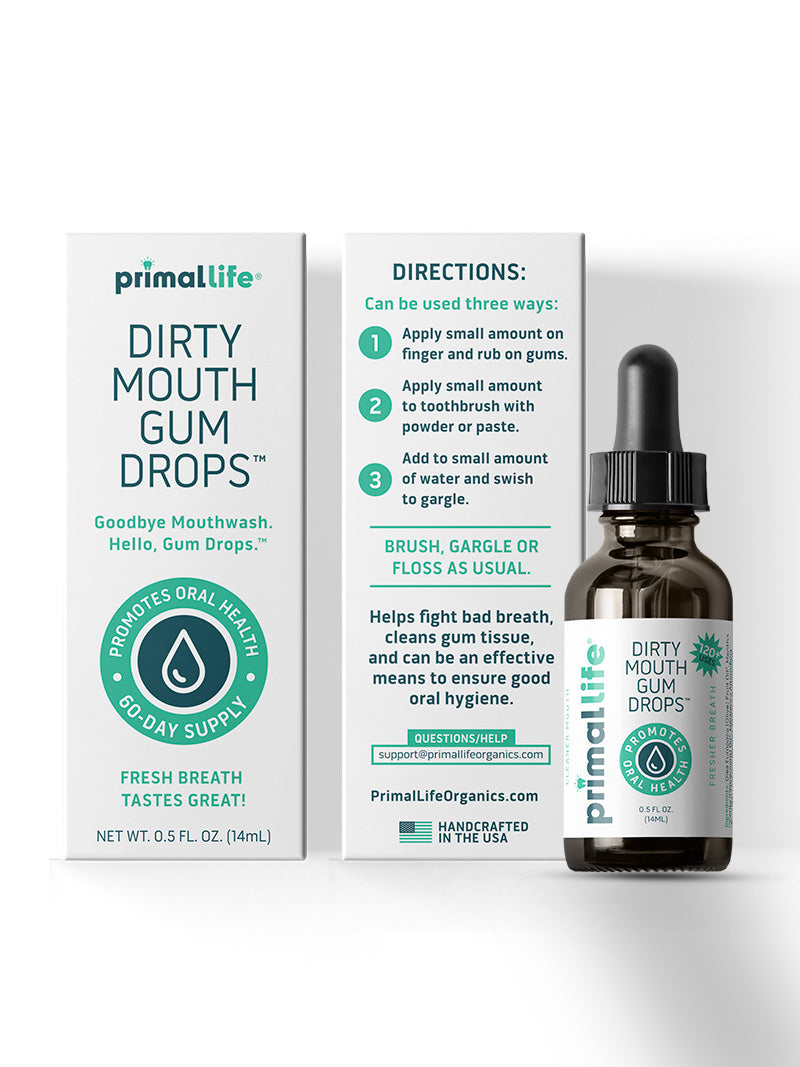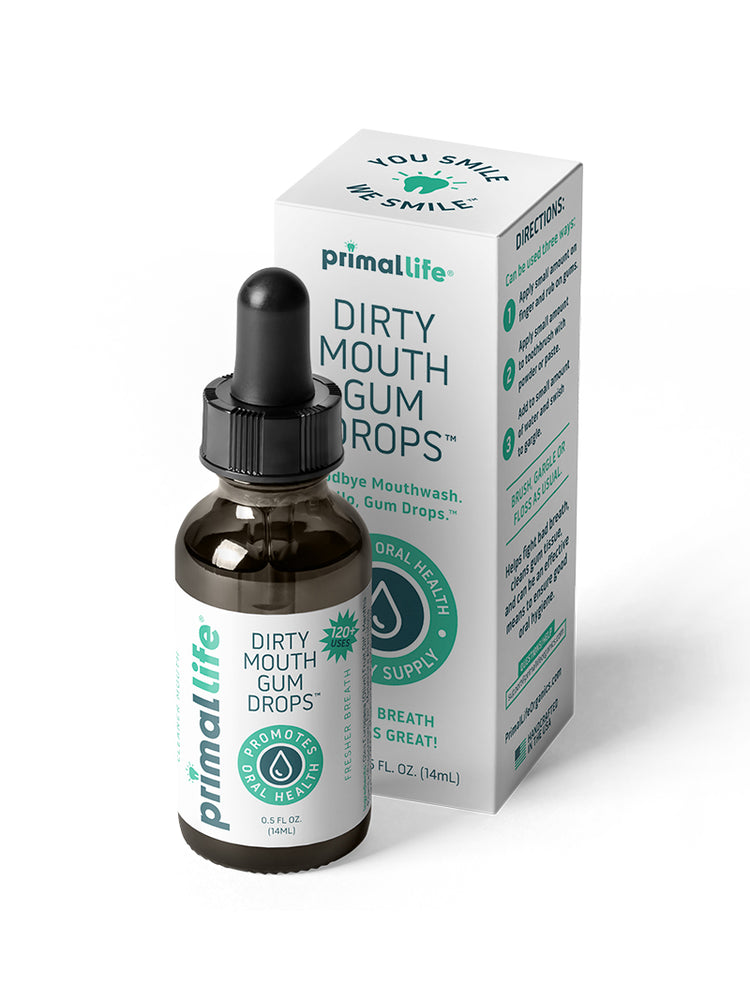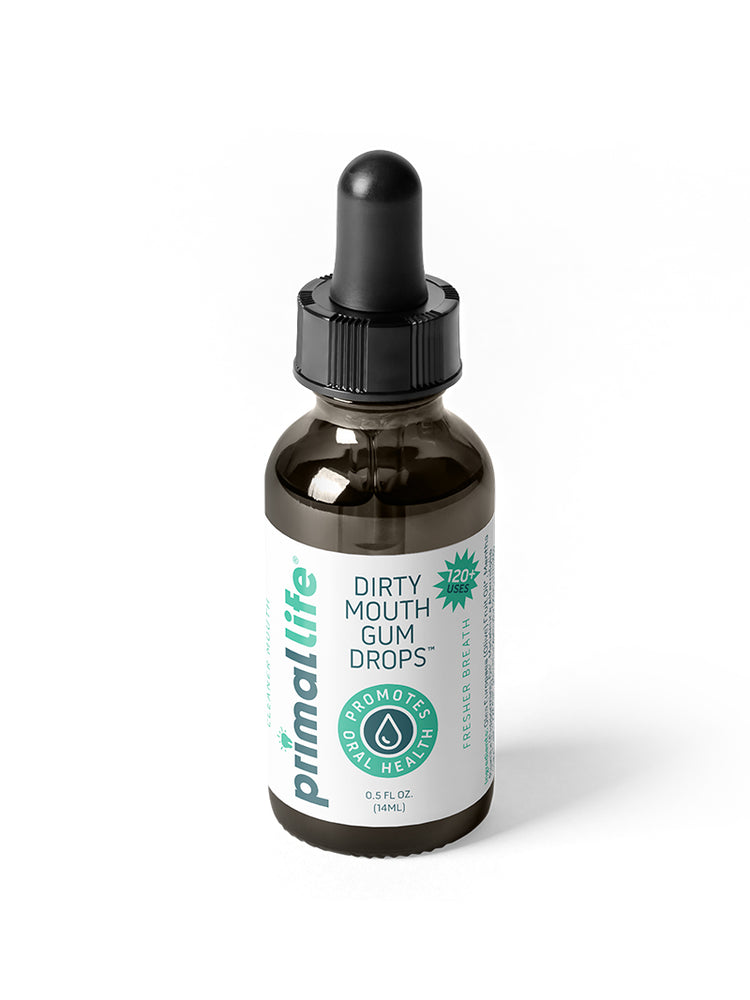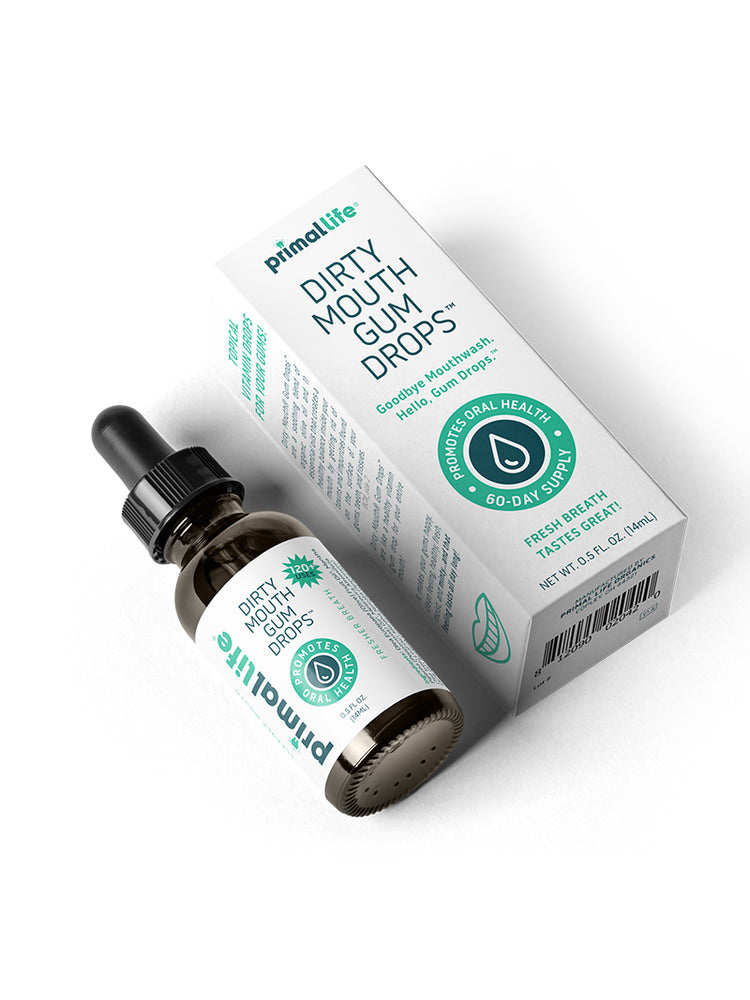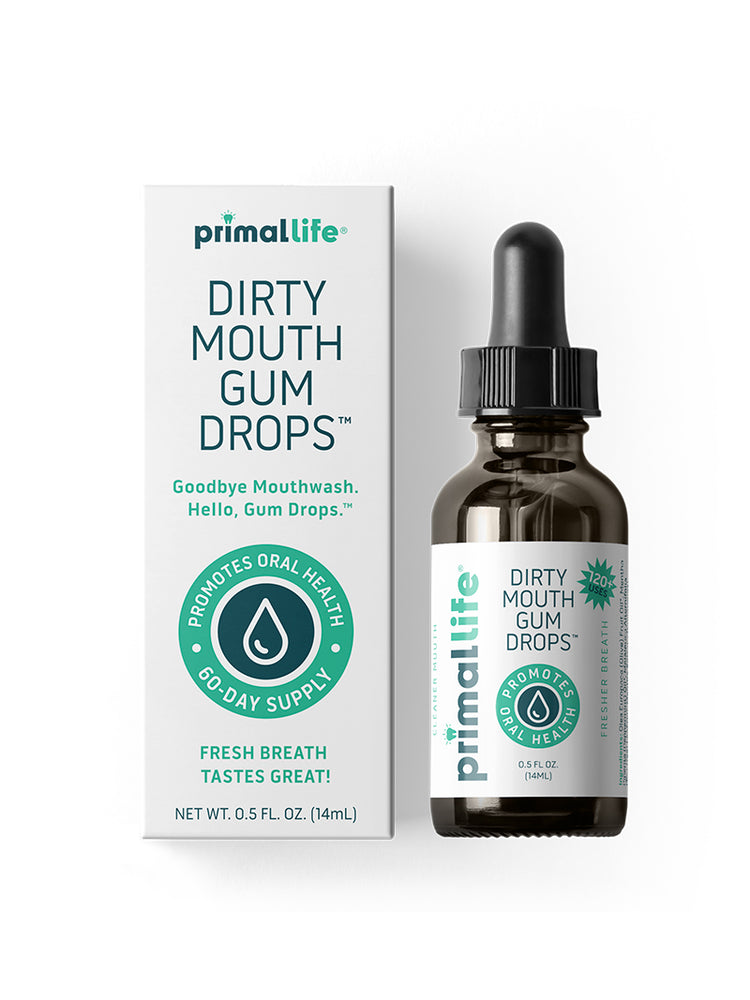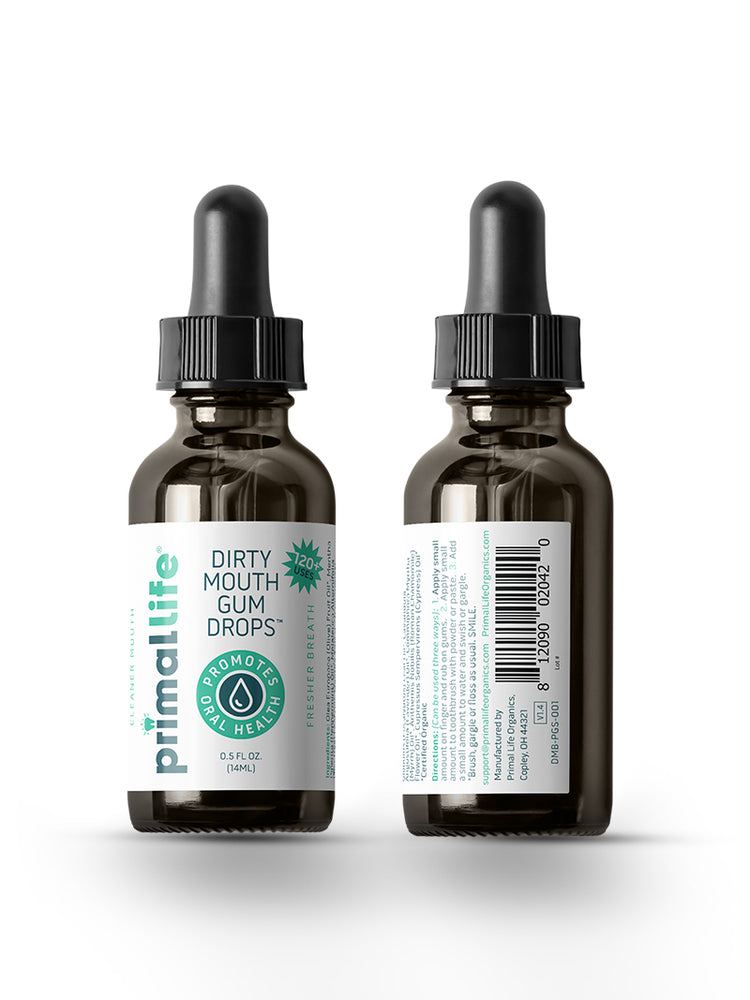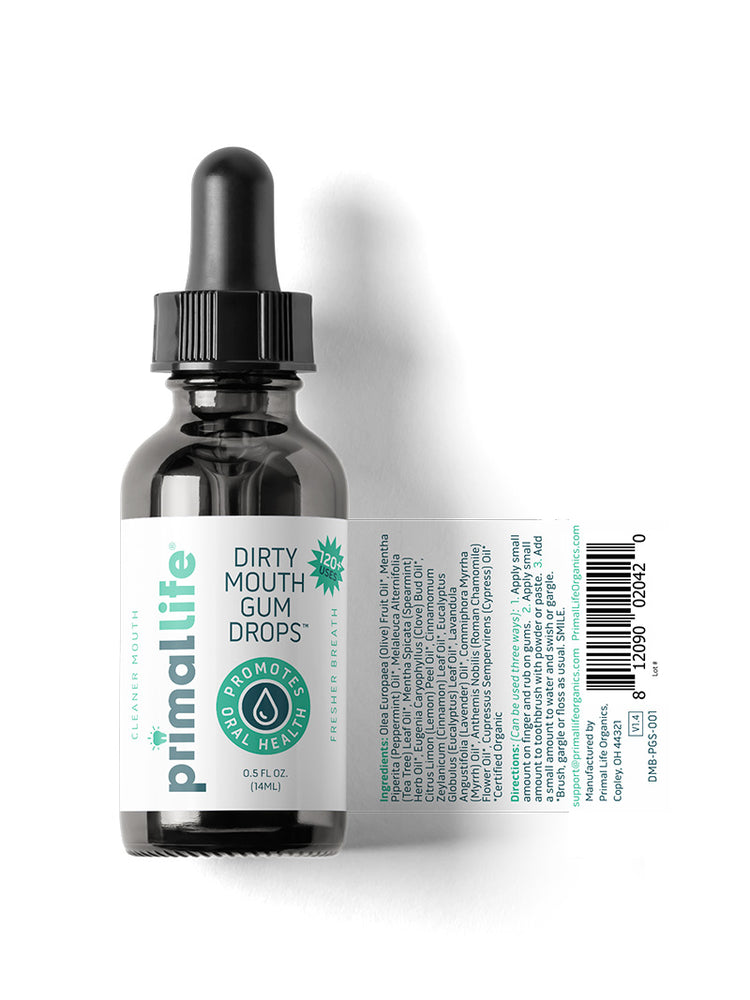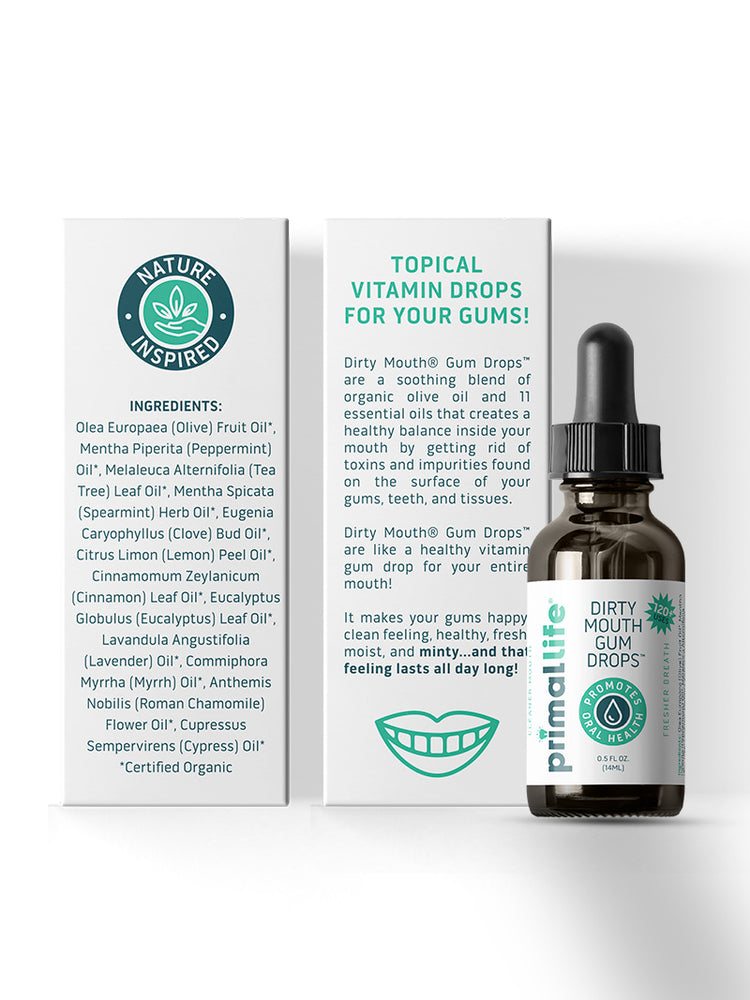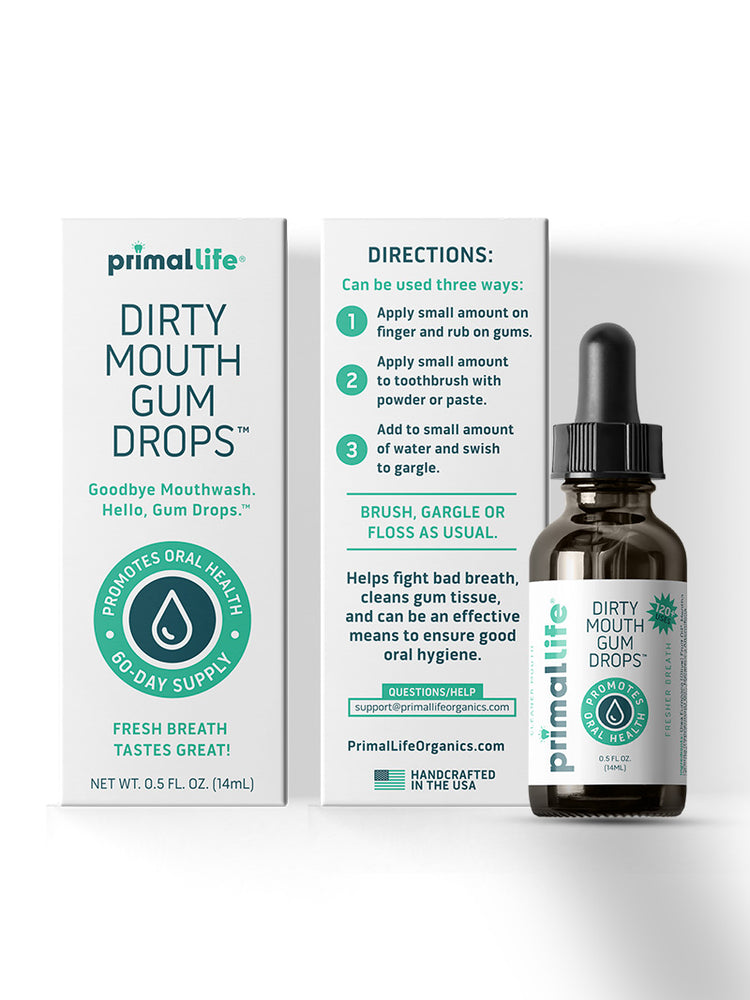How to Get Rid of Plaque (And Prevent It From Coming Back!)

You can’t stay healthy without a healthy mouth. Period.
Yet each day your mouth is exposed to bacteria, toxic heavy metals, and everything in between. It doesn’t take much for plaque to start forming a film over your teeth and gums, triggering the precursor to tartar, decay, and gum disease.
So how can you get rid of plaque… and keep it from coming back? You won’t find the answer in your standard tube of toothpaste. True oral health requires a shift in your approach to oral care with natural products that deliver real results.
What Is Plaque?
The word plaque looks nearly identical to the term plague, which isn’t just a weird coincidence. If something plagues you, it causes continual distress and trouble. Well, that’s exactly what plaque does to your teeth! All day, every day, plaque builds up on your teeth and triggers the initial stages of tooth decay.
This sticky film of bacteria accumulates everywhere: on your teeth, between your teeth, and below the gum line. Plaque is technically a microbial biofilm that contains a diverse range of bacteria. Its bacteria work together to cultivate plaque strong enough to resist antimicrobial agents and continue thriving in the dark crevices of the mouth.
What Causes Plaque?
Just like a flower needs water, sunlight, and CO2 to live, plaque requires carbohydrates, saliva, and bacteria to form. As soon as you eat or drink something containing carbohydrates, they combine with the existing bacteria inside of your mouth to create acid. Acid is bad news — it undergoes chemical reactions with saliva and surrounding food particles to create sticky but colorless plaque.
Any foods or drinks containing carbohydrates can trigger the formation of plaque, especially those with high sugar content like soda and candy. As you chew, carbohydrates combine with the natural bacteria in your mouth to create plaque. Plaque breeds more plaque and accumulates quickly in the crevices of your teeth and along the gum line.
How Does Plaque Cause Tartar to Form?
Plaque is a serious oral health problem, but it becomes much worse without careful dental care. If your brushing and flossing habits fail to remove plaque from your teeth and gums on a regular basis, the sticky substance hardens into tartar. This doesn’t take long — even just one day of plaque accumulation can morph into hard tartar crystals as minerals in your saliva combine with the plaque.
Tartar, also known as dental calculus, isn’t sticky or colorless like plaque. It’s a hard, crusty, yellow or brown substance that bonds harshly to your teeth. This makes tartar difficult to remove and highlights the importance of preventing it altogether. There’s no way around it: plaque and tartar both pose serious threats to your teeth, gums, and overall health.
The Dangers of Plaque and Tartar
Plaque’s acidic base slowly but surely eats away at your tooth enamel and destroys the healthy structure of your teeth. Cavities offer the first warning sign of plaque damage. While one isolated cavity might not be too bad, the ongoing presence of plaque eventually causes more serious problems like gingivitis, the first stage of gum disease.
Plaque produces toxins that irritate and inflame the gums, which triggers the first stage of gum disease. You can recognize gingivitis from these uncomfortable symptoms:
- Bright red gums
- Tender, painful gums
- Bleeding from the gums, especially when brushing and flossing
- Chronic bad breath
- Increased tooth sensitivity
- Tooth decay and cavities
Once plaque changes into tartar, you’re at risk of even more severe consequences. Since tartar can develop both above and below the gum line, it threatens not just your teeth, but your jaw bone and gum tissue as well.
If tartar continues to accumulate and your gingivitis is left untreated, it progresses into the more severe form of gum disease called periodontitis. More than 64 million American adults have periodontitis defined by the following signs:
- Pockets between the gums and the teeth
- Recurring gum abscesses
- Loose and shifting teeth
- Receding gums
- Tooth loss
- Degeneration of the jawbone
Unfortunately, the devastating effects of untreated plaque and tartar extend beyond the mouth as well. There’s a clear connection between poor dental hygiene and disease throughout the body.
The Connection Between Plaque, Tartar, and Disease
Plaque and tartar eventually cause gum disease, which is closely associated with other chronic inflammatory diseases like diabetes, dementia, and cardiovascular disease.
You might be wondering how an issue in your mouth can translate to disease in your body. You only need to consider the role of your mouth to understand. Your mouth is exposed to everything you encounter, including viruses, fungi, and bacteria. It’s the job of your mouth to stop toxins before they travel into your digestive system and bloodstream.
However, if your teeth are decaying and your gum tissue is too diseased to stop and kill those pathogens in their tracks, all of those bacteria trigger widespread inflammation and move quickly into your bloodstream to wreak havoc on your body.
Chronic inflammation is one of the most concerning symptoms of poor oral health. It’s far more than just swelling and redness — chronic inflammation is the root of all disease! When the body’s healthy response to injury becomes permanently “turned on” by injury or trauma, steady inflammation places extreme strain on arteries and organs. This eventually contributes to conditions like cancer, diabetes, heart disease, Alzheimer’s disease, and many more.
How to Get Rid of Plaque
Maintaining and protecting your dental health isn’t difficult. In the time it takes to make a cup of coffee or scroll through your Facebook notifications, you can get rid of plaque and prevent the formation of tartar.
If you can make the commitment to spend a few minutes each day using the techniques below, you’ll avoid the nasty consequences of gum disease and give yourself a few more reasons to smile.
Ditch Your Fluoride Toothpaste
Have you ever given your tube of toothpaste a second glance? Have you ever considered the ingredients label? If not, you might be shocked and bewildered to find out that most common toothpaste ingredients, like fluoride and glycerol, do absolutely nothing to actively improve your dental health. They do the exact opposite.
The true purpose of brushing should be to remineralize your mouth and nurture the formation of healthy oral bacteria. Enhancing the overall health of your mouth, minimizing inflammation, and fighting harmful bacteria creates an environment where plaque and tartar can’t thrive. But normal toothpaste can’t do any of that!
This is why it’s such a smart decision to switch from fluoride toothpaste to a natural clay-based tooth powder.
The Benefits of Natural Tooth Powder
Unlike fluoride toothpaste, which introduces neurotoxins into your body and thwarts your mouth’s natural balance, natural tooth powder nurtures and enhances true oral health benefits:
- Strengthens your teeth and enamel
- Fights off harmful bacteria while protecting healthy bacteria
- Reduces and prevents sensitivity by remineralizing teeth
- Protects gums from decay and infection by fighting plaque and reducing inflammation
This means that replacing your toothpaste with tooth powder won’t merely eliminate plaque, but it will optimize your oral health and keep your teeth and gums legitimately healthy!
If brushing with a clay-based tooth powder sounds strange, don’t worry. Once you start, you’ll wonder how you ever used to feel satisfied with toxic toothpaste.
Start by finding a clay-based product like Dirty Mouth® Toothpowder, then follow these steps:
- Wet your toothbrush and shake away excess moisture
- Dip only the tip of your toothbrush into toothpowder
- Brush for 2 minutes like normal, then spit, rinse, and smile wide
Plaque won’t stand a chance, and it won’t take long before you start to notice your teeth feel cleaner, stronger, and look whiter.
Try a Charcoal Toothbrush
You’ve probably been brushing with that same type of $2.00 grocery store toothbrush since you were a toddler. Most people don’t realize there’s even another option! And while your standard, run-of-the-mill toothbrush gets the job done, an advanced charcoal-powered toothbrush can enhance and improve your oral health.
Consider switching to the Charcoal Ion Toothbrush made from sustainable bamboo and charcoal-infused bristles. Charcoal’s negative ions help release the tartar and plaque molecules in your teeth, which makes them easier to remove. It’s simple and unassuming, but this makes it possible for a charcoal toothbrush to give extra cleaning and whitening power to your normal brushing routine.
Suck It Up and Floss!
Flossing might be the most hated part of oral care. Even though flossing is a simple way to remove the food debris and bacteria lurking between the teeth, most people avoid flossing with stubborn determination. In fact, the American Dental Association revealed that only 16% of Americans floss regularly.
Yikes! You wouldn’t shave just one leg or wash only half your face, so why are you giving your floss the cold shoulder and only cleaning a portion of your mouth? If you’re serious about learning how to get rid of plaque, flossing isn’t optional. It’s the only way to remove plaque from between the teeth and prevent decay and inflammation in those areas. You can find floss in every flavor from mint to pickle juice (yes, really), so stock up and stop making excuses.
Not sure how to start? Follow these steps:
- Wrap about 18” of floss around each of your middle or pointer fingers
- Hold the floss taut and gently fit in between two teeth
- Bend the floss into a “C” shape as you rub it gently up and down the side of the tooth
- Repeat in between all teeth
New flossing tools like floss picks also make it easier than ever to floss quickly and efficiently.
Make Your Own Safe, Natural Mouthwash
Did you know that most commercial mouthwash products are harsh, astringent, and bad for your mouth? That’s right — conventional mouthwash uses harsh ingredients that destroy all of the bacteria in your mouth — the good and the bad. It’s true that harmful bacteria need to be removed from your mouth, but there’s just as many healthy, productive bacteria that need to stay in place to maintain the balance of your oral microbiome.
Since a healthy oral microbiome helps to naturally remineralize your teeth, using conventional mouthwash on a daily basis may accelerate tooth decay instead of preventing it! Don’t let yourself be fooled by the clever marketing propaganda and flashy labels of regular mouthwash — you’re better off making your own with essential oils.
Essential oils are highly concentrated botanical oils used for their therapeutic properties since ancient times. Tea tree oil is one of the most popular essential oils used in DIY mouthwash because it’s such a versatile oil with numerous documented research studies to support its therapeutic powers.
Research shows that tea tree essential oil can naturally fight bacterial infections and kill oral pathogens. This makes it an excellent natural way to counteract gingivitis, reduce inflammation, and prevent the conditions that plaque and tartar love. Blend the following ingredients to make your own remineralizing mouthwash:
- 2 drops tea tree essential oil
- 2 drops peppermint essential oil
- ½ cup filtered water
- 2 tsp baking soda
Just swish and spit twice a day to combat unwanted plaque and keep your smile looking as happy as you feel. You’ll notice a huge difference from the harsh conventional mouthwash you’ve always been taught to use.
Make Plaque Disappear By Oil Pulling
This technique is right in the name: use oil to pull toxins, plaque, and bacteria right out of your mouth. This traditional Indian folk remedy is more popular than ever before because it naturally improves oral hygiene and even helps your teeth look a few shades whiter.
It’s simple to reap the benefits of oil pulling. Just place a spoonful of coconut oil or another natural oil into your mouth and swish around for 20 minutes. Once time is up, spit the oil into the trash and rinse your mouth. The gross toxins, bacteria, and debris in your mouth will be pulled out by the oil, leaving your teeth and gums healthier and brighter.
Don’t Forget About Your Tongue
Most conversations about oral health highlight the teeth and gums, but what about the tongue? Your tongue needs some love too! In fact, you might not realize the significant influence your tongue can have over your oral health.
A healthy tongue looks perfectly pink without any signs of deep red, yellow, or white discoloration. Even the slightest sign of a white film coating on the top of your tongue indicates that bad bacteria are starting to overtake the good bacteria in your mouth. That coating of bacteria contributes to embarrassing bad breath and encourages plaque to form by trapping food particles in dark, tiny crevices.
Fortunately, the solution is simple. Use a copper tongue scraper to lightly scrape all of that white film off your tongue. Rinse in running water and repeat until that healthy pink hue returns. You can do this before or after you brush; there’s no right or wrong.
How to Prevent Plaque and Tartar From Forming
Fighting the plaque that’s already on your teeth is undoubtedly important, but it’s equally as important to stop plaque and tartar from developing in the first place! Prevention stops decay before it even has a chance to start, so it’s the most powerful way to protect your mouth.
Find a Dental Care Routine That Works for You
You don’t need to spend 30 minutes every morning and night cleaning your teeth, but you do need to create a routine that works with your schedule and meets your dental needs.
Use a combination of the techniques described above to tackle plaque and keep your mouth healthy. Brush, floss, and rinse at least twice a day, then try oil pulling a few times a week. Five minutes in the morning and five minutes at night is all you need to enjoy the perks of a healthy mouth for the rest of your life. We can all make time for that, right?
Of course, you’ll also benefit by swapping out your conventional oral care products with natural alternatives like tooth powder, charcoal-infused toothbrushes, and DIY mouthwash.
Choose Foods That Make Your Mouth Smile
All of the brushing and flossing in the world can’t save you if you’re constantly attacking your teeth and gums with sugar. It’s not just donuts and cake, but all refined and processed foods high in carbs. If you can improve your eating habits, you’ll improve your oral health and your physical health as well!
It’s not an accident that the healthiest foods for your body are also the healthiest for your mouth:
- Leafy greens
- Carrots and apples
- Milk, yogurt, cheese
- Nuts and seeds
- Lean protein
- Water
All of these options help to balance the pH in your mouth, stimulate more saliva to clear away food debris, and fortify your teeth with calcium and other important nutrients. They’re healthy, filling, and tasty, so revise your grocery list now!
Get Rid of Plaque for a Happy, Healthy Mouth
Plaque is impossible to avoid entirely, but it’s easy enough to control with the right oral care habits and products. By cultivating a healthy oral microbiome and reducing the amount of plaque on your teeth and gums, you can effectively prevent awful consequences like tooth loss and gum disease.
Conventional toothpaste can’t do much to stop plaque, but Dirty Mouth Toothpowder sure can. With awesome natural ingredients like bentonite clay, activated charcoal, white kaolin clay, and organic essential oils, toothpowder fights plaque and improves the overall health of your mouth so that you can smile without hesitation.
Resources
https://www.livescience.com/44185-what-is-plaque.html
https://www.news-medical.net/health/What-is-Tartar.aspx
https://crest.com/en-us/oral-health/conditions/tartar-plaque/plaque-tartar-causes-prevention-removal
https://www.nidcr.nih.gov/health-info/for-older-adults
https://www.lanap.com/2016/09/22/surprising-link-between-gum-disease-and-systemic-disease/
https://www.perio.org/consumer/cdc-study.htm
https://www.johnshopkinshealthreview.com/issues/spring-summer-2016/articles/understanding-inflammation
https://www.ada.org/en/publications/ada-news/2017-archive/october/new-survey-highlights-unusual-flossing-habits
https://askthedentist.com/oral-microbiome/
https://www.ncbi.nlm.nih.gov/pmc/articles/PMC1360273/
https://www.ncbi.nlm.nih.gov/pmc/articles/PMC4054083/







